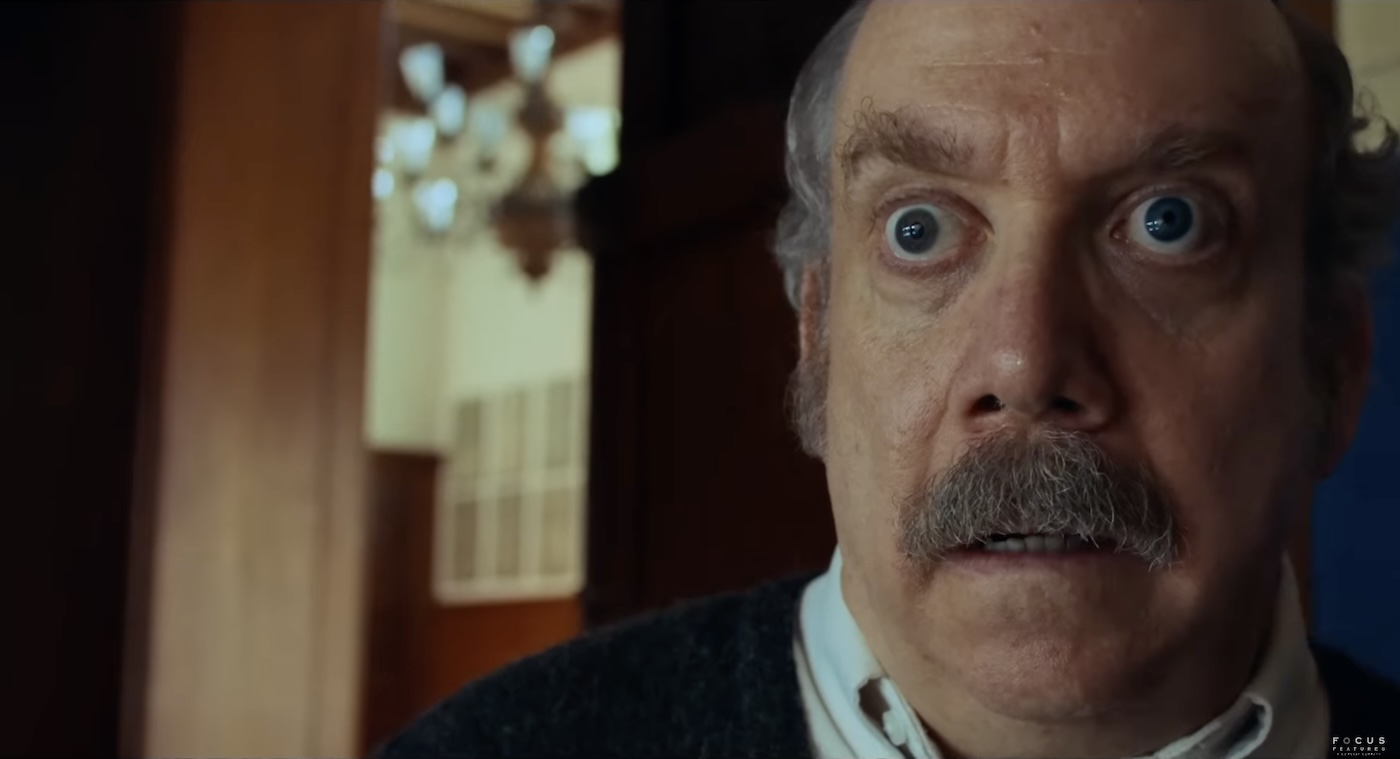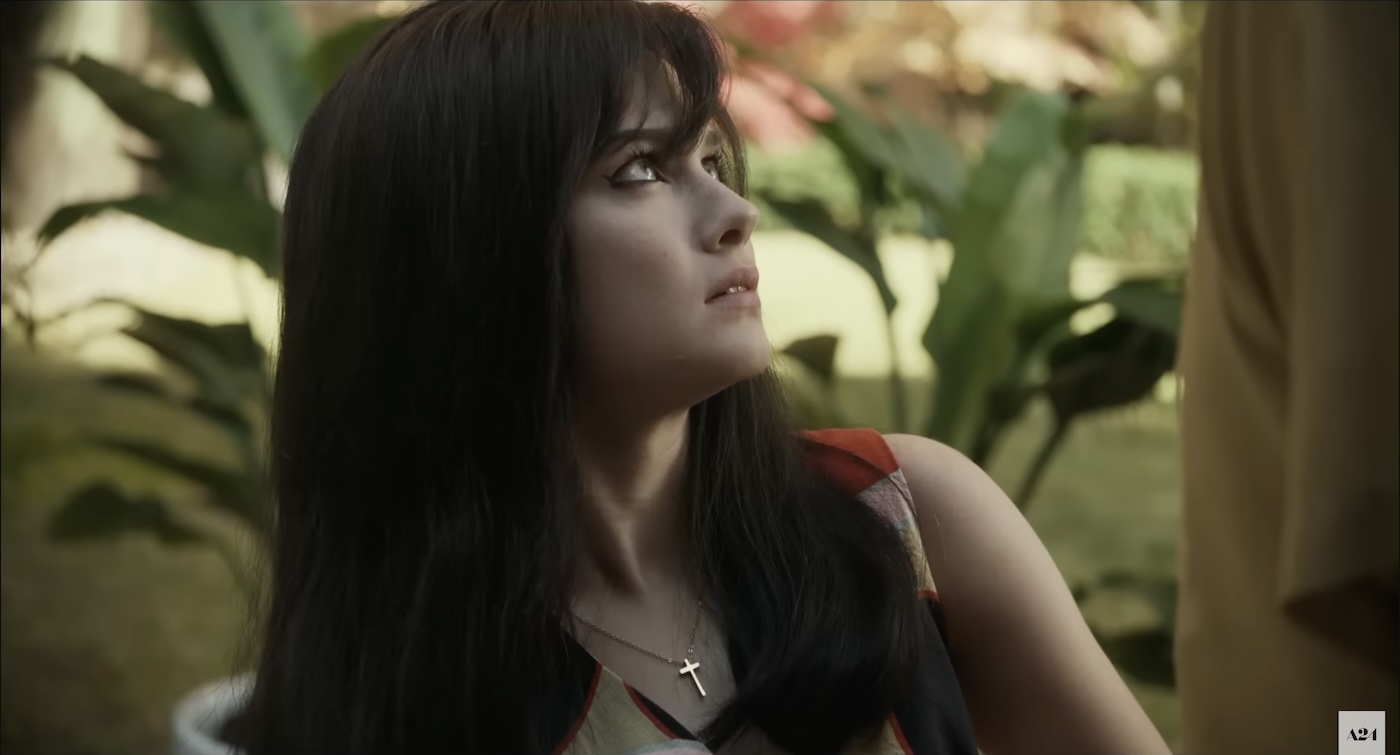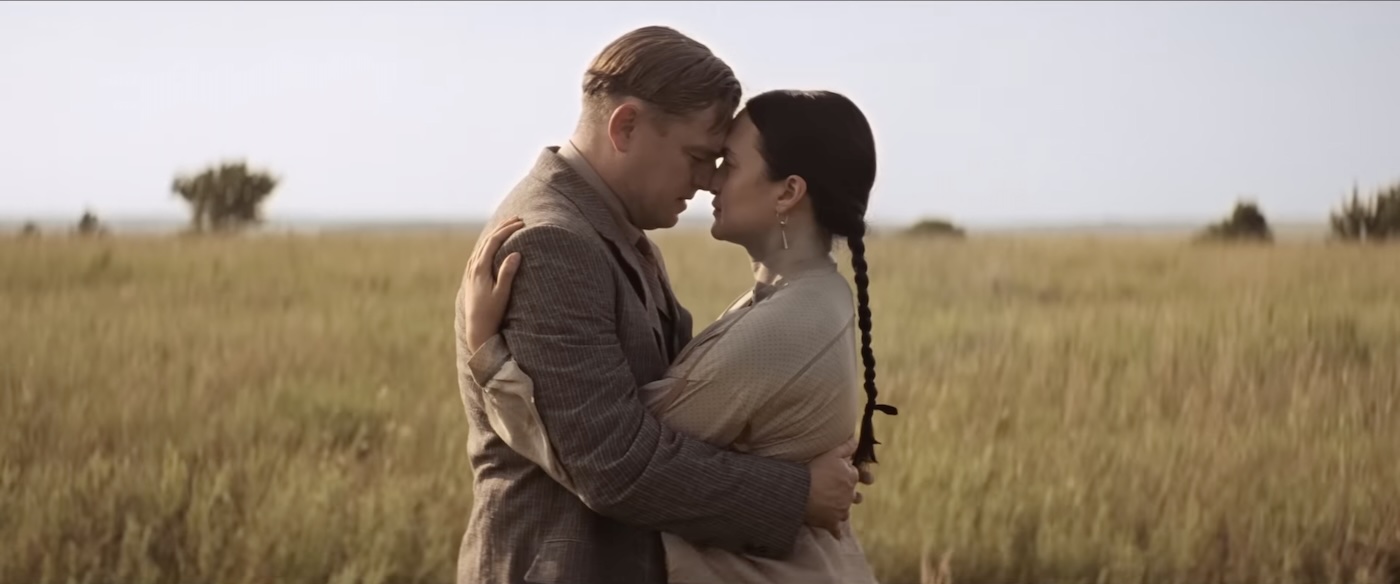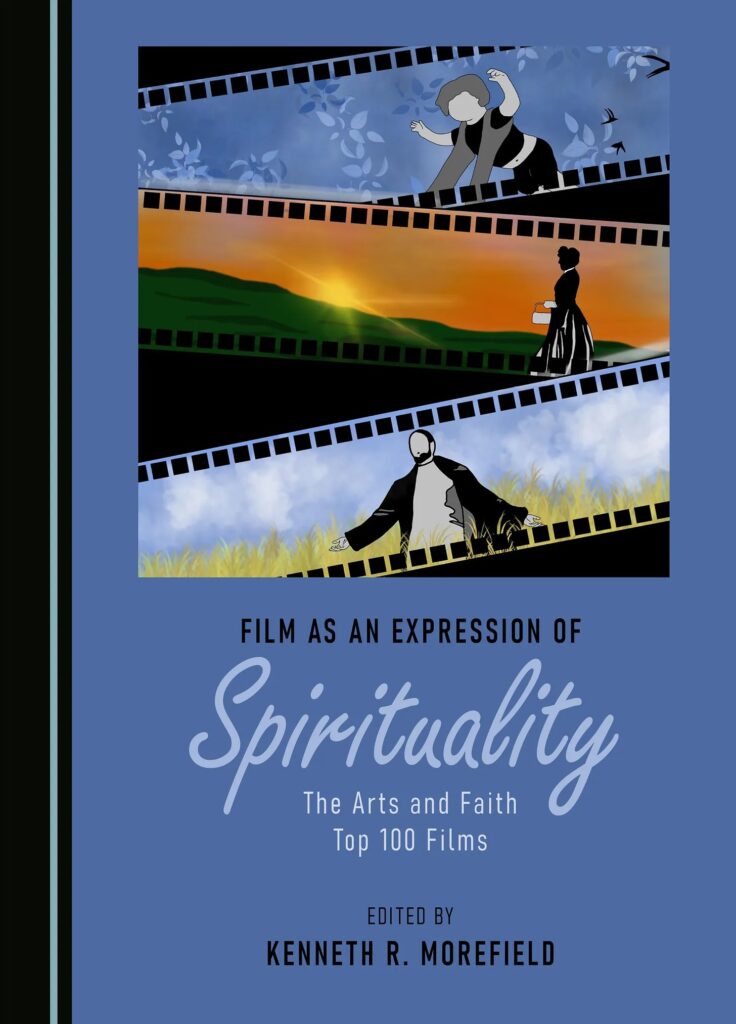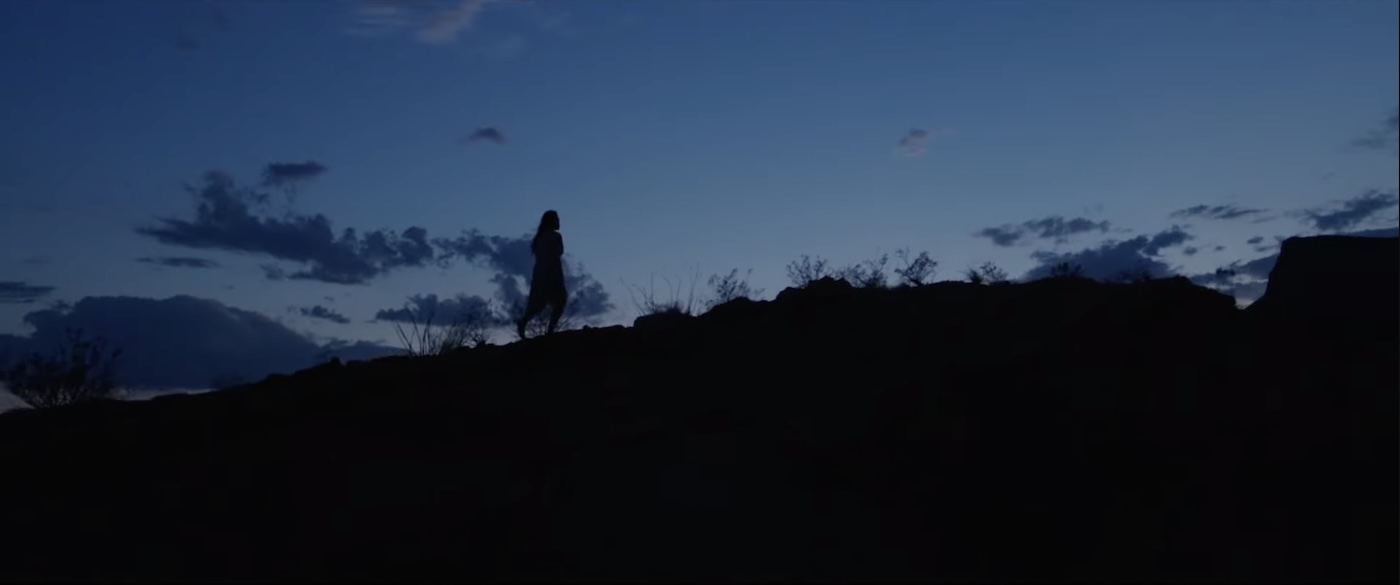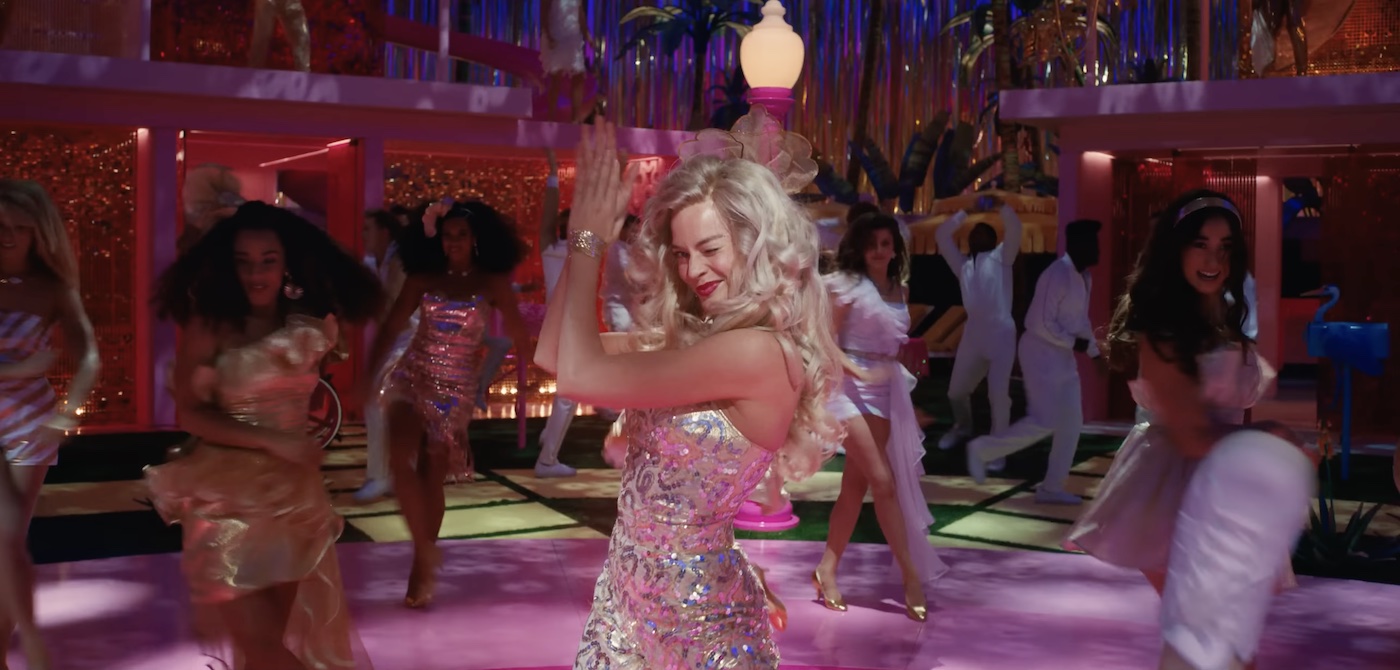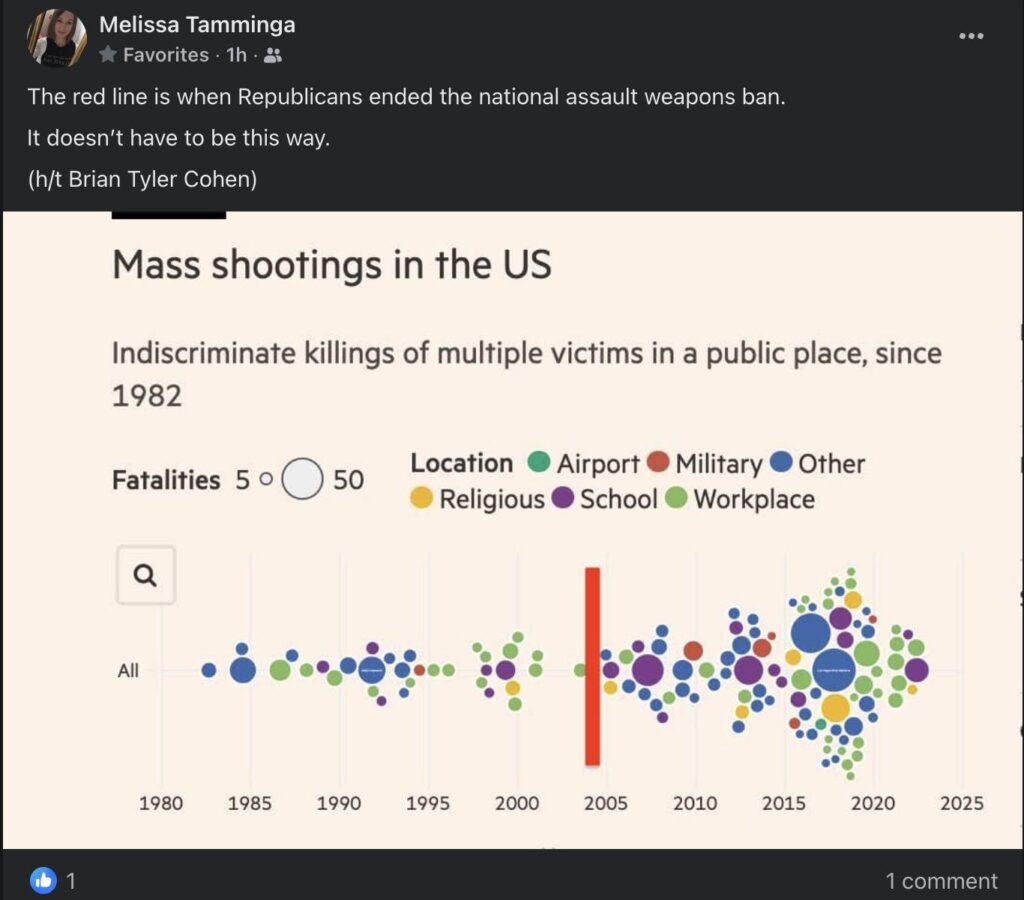The great Nicolas Cage shows up for Dream Scenario, but is the movie worthy of him?
An early draft of this review was originally published on November 27, 2023,
at Give Me Some Light on Substack, months before it appeared here.
Subscribe, and you'll read many of these reviews while the films are still breaking news!
Diamond rings and all those things
They never sparkle like your smile
And as for fame, it’s just a name
That only satisfies you for a while…
You say you hunger
For something you can’t get at all
And love is not enough anymore…
If I was king for just one day
I would give it all away
I would give it all away
To be with you…
— Thompson Twins, “King for a Day”
For a movie about the world’s most uninteresting man, surrounded by a supporting cast of even less interesting characters — yes, I realize that’s a contradiction, and nevertheless it’s true — Dream Scenario sure plays around with a lot of interesting ideas!
Dream Scenario, the A24 Flavor of the Month from writer and director Kristoffer Borgli, is a wise and witty satire about America’s cultural obsession with “going viral,” the fleeting and fragile nature of fame, and the cost of being a household name if the public turns against you. For starters.
This ultimately underwhelming psychological thriller follows a frustrated academic, Paul Matthews (Nicolas Cage). Paul suffers from a sort of mediocrity that makes him a not-so-innocent bystander on the stage of life. He’s a ho-hum husband, an extremely uncool dad, a sort of “blank” in a world of exclamation points. His lack of agency doesn’t just make him uninteresting; it makes him annoying. He’d be lost if it weren’t for his longsuffering spouse Janet (Julianne Nicholson), who seems to still love him for who he is. Otherwise, Paul shuffles through every day yearning to be admired by his daughters, longing to be respected by his colleagues, and dreaming of being recognized for his studies on the psychology of ants. And he gets… wait for it… antsy when another academic infringes on what he considers his intellectual territory.
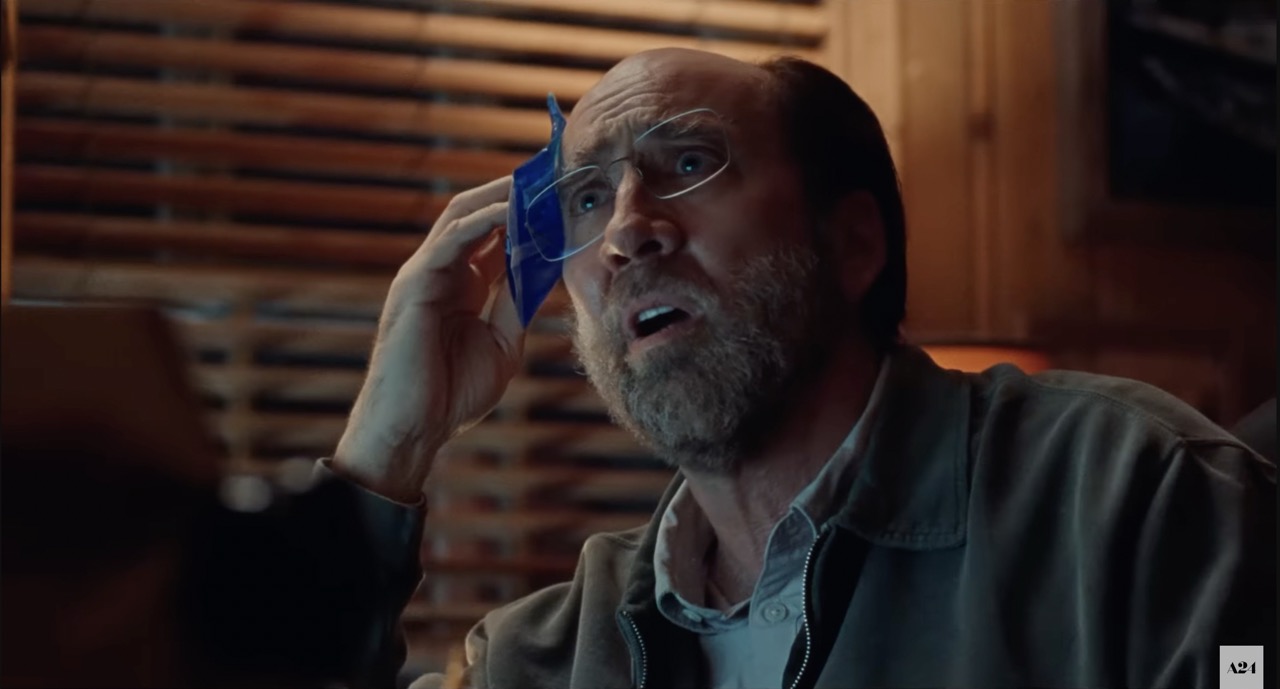
But it’s hard to be celebrated for one’s publications if one can’t find the will to sit down and start writing. And, like another character Nicolas Cage played in Charlie Kaufman’s provocative Adaptation, this avatar of Kaufman-esque insecurity and awkwardness just can’t bring himself to compose the pages that might finally put him on the Map of the World’s Somebodies.
In my creative writing classes, we always get around to talking about “the Story Spine,” an elementary formula that can be identified in anything we recognize as a story. There’s the situation: the “Once Upon a Time…” line. There’s the normalcy: the “Every day…” line. And then comes that most important moment, the thing we call the Inciting Incident. It’s the line that says, “But one day….”
The Inciting Incident of Dream Scenario, the big idea that sets the primary drama in motion, is this: Inexplicably, Paul starts appearing in everyone’s dreams. Everyone’s. His face is the face of an enigmatic dream epidemic. And he’s catapulted to global fame almost overnight. Fame for doing… nothing. He’s just suddenly everywhere.
It’s a great twist, a brilliant premise for the age of memes and TikTok influencers. Paul is recognized by everyone, his world is turned upside down, and he’s appearing on talk shows. Why? For doing next to nothing. For appearing to do something. His bored and despairing students suddenly find him interesting.

What comes next in the Story Spine? A sequence of steps that we call “And because of that….” Each of these steps represents a chain reaction set in motion by the Inciting Incident, a series of ripple effects and consequences leading to the inevitable step that we call “Until finally…” when everything reaches a point of resolution or collapse.
One of the most significant “And because of that….” steps in Dream Scenario is this: Slowly accepting and them embracing his fame, Paul starts looking for a way to exploit the moment: He scrambles to secure a cart (that is, a book deal) that he can place before the horse (that is, any actual writing). Maybe Paul’s moment has finally come.
And who can blame him? Let’s face it: We all want to be seen as special. We crave the flattery of positive attention. Here’s his chance, in the spotlight on the world stage, to reveal what he really has to offer.
But we also know that for every cultural idol who has earned our respect and admiration, there are a hundred more who have become household names for reasons that are questionable at best. Has Paul prepared properly for the moment? Does he have something to offer?

And there’s another dangerous question on the table: It’s no secret that a lifetime of good work can be flushed down the cancel-culture toilet if the X-Ray of media attention discovers (or fabricates) a celebrity’s character flaw. As Suzanne Vega sings, “When heroes go down / They land in flame / So don't expect any slow and careful / Settling of blame.” Is Paul a person built to survive the searing scrutiny of global fame?
Michael Cera — perfectly cast in view of the fact that he’s often chosen to play human “blanks” — plays an opportunistic marketing agent named Trent. (Because it’s spelled kinda like… “Trend,” I guess?) Trent is the first marketplace predator to pounce on Paul’s unlikely “influencer” potential, hoping to sign him to advertising deals with a cola company. Of the film’s many “moves” to score points of social commentary, this may be the sharpest, making us think about how many celebrity spokespersons we listen to per day, and wonder why we find any merit at all in their endorsements of anything. (I write this as another pizza commercial with Shaquille O’Neal is playing on my TV.)
Paul doesn’t want to become a spokesperson for anything. He wants to be known for who he actually is and what he actually cares about. But nobody is really interested in either of those things. Love may be attention — thank you, Lady Bird — but not all forms of attention are love. It takes Paul a while to realize that people are only interested in him for a couple of reasons: For some, he occupies the spotlight they crave for themselves. For others, his fame represents a kind of currency, and they want to find a way to cash in. I’m reminded of the wisdom of that clear-eyed seashell in Marcel the Shell With Shoes On: There’s a difference between an audience and a community. Paul has stumbled into one, when he needs to do the work necessary to play a meaningful part of the other.
Wow — on paper, this sounds like such a great movie. Kristoffer Borgli has so much of what he needs here to deliver a great film.
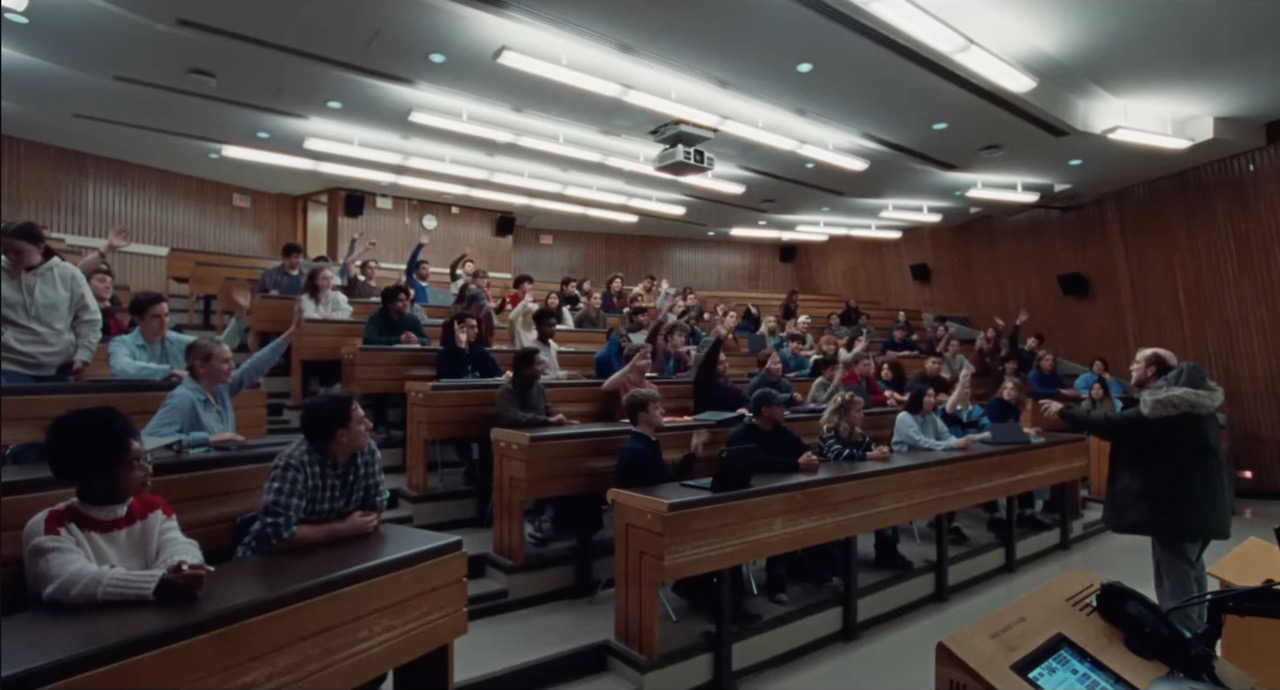
First, he has such a promising premise. He sends Paul along a narrative trajectory rich with opportunities to mirror back to us our own complicity in the absurdities of pop-culture exploitation. Paul enjoys the kind of fame that most TikTokkers’ dream about. But then, he ends up suffering the worst kind of consequences that most fame-seekers ignorantly risk… and many, unfortunately, find. Media spotlights can glorify those who seek them and those who accidentally stumble into the glow. But they can also burn the same “lucky winners” — great artists and soulless opportunists alike — into ash in a moment, whether they have made a mistake that deserves such judgment or not.
At its best, Dream Scenario drives us to ask important questions:
- Do we really want to be famous? What do we want to be famous for? And what purpose do we hope that fame will serve?
- When we look around, do we see fame bringing true health and human flourishing to the people we admire? What does living in the spotlight cost a person? Are we ready for that?
- Wouldn’t it be better just to do good work consistently and quietly? Do we really want to run the risk of bankrupting our whole life’s work and the security of our loved ones, inviting a plague of dehumanizing surveillance?
Secondly, Borgli has one of Hollywood’s most recognizable marquee names in the lead role. Nicolas Cage may be the perfect star for this part, given that his career has been a rollercoaster of the highs and lows of fame. He’s had top-billing in prestige pictures. He’s won an Oscar. He’s had romances and breakups that have been tabloid cover stories. His media history is one of achievement and embarrassment. But we can’t escape the question that comes with any new Cage movie: Which Cage are we going to get? The one who just shows up and cashes in? Or the one who does the work?

Good news: Dream Scenario stars the Great Nicolas Cage. For more about 90 of the film’s 105 minutes, Borgli serves up a sequence of intriguing scenarios, but they only work because of Cage’s creativity. Given the challenge of playing someone who isn’t interesting, Cage does something interesting with every single scene. Since the comic performances that made him famous in the late ‘80s, his flair for hilarity has only returned on rare occasions like Ridley Scott’s Matchstick Men, Spike Jonze’s Adaptation, and Werner Herzog’s Bad Lieutenant Port of Call New Orleans. But he’s as surprisingly funny in Dream Scenario as he was surprisingly dramatic and endearing in 2021’s Pig. Let’s get him yet another Oscar nomination, Academy!
Julianne Nicholson, playing Paul’s longsuffering wife, is lovely. (I’ve been a fan of hers since Tully way back in 2000, and I’m still reeling from her fierce performance in Mare of Easttown.)
But that’s where the good news stops. The supporting cast, given half-cooked characters with nothing interesting to offer, aren’t given much of an opportunity to make memorable impressions. And it’s not for lack of talent: The film squanders the presence of Tim Meadows (who isn’t allowed to be funny?), Dylan Baker (who isn’t given a single interesting moment to play?), and Shithouse’s Dylan Gelula (whose character, in a more talented screenwriter’s hands, might have stolen the show?) I’m most frustrated to find Amber Midthunder, so kinetic and compelling in 2022’s excellent Predator prequel called Prey, given nothing to do at all except make half the audience say “Wait—why do I recognize her?”

Perhaps the most surprisingly disappointing aspect of the film, given that it’s from the studio that gave us The Green Knight and Everything Everywhere All at Once, is that Borgli doesn’t conjure a single compelling image. I wouldn’t call Dream Scenario “a bad dream,” but it sure is a bland dream. If anyone finds images from this movie memorable, it’s because a situation is interesting, not the way that it’s captured. We get a shot of crocodiles cornering a young woman; another of a girl suddenly levitating; a few of Paul viciously attacking people; another of young man being stalked by a blood-red devil. And yet, while the prospect of creating these images must have seemed exciting, none of them — not even the one in which David Byrne’s giant suit from Stop Making Sense makes an appearance — are particularly striking or suggestive. Very few filmmakers know how to achieve a truly dream-like “surreality” — and I don’t think Borgli has David Lynch’s number in his iPhone contacts.
Thus, moviegoers are likely to come away from Dream Scenario talking about Cage or offering their various takes on the film’s obvious zeitgeist commentaries. But it’s the pictures in motion pictures that make the most lasting impressions. And on that count, what Dream Scenario could have been is something we can only dream about.
And yet…
As underwhelmed as I am by the last fifteen minutes of Dream Scenario, I’ve been thinking about it a lot. So much of what it reflects back to us about our own fame-obsessed culture is worth taking to heart.
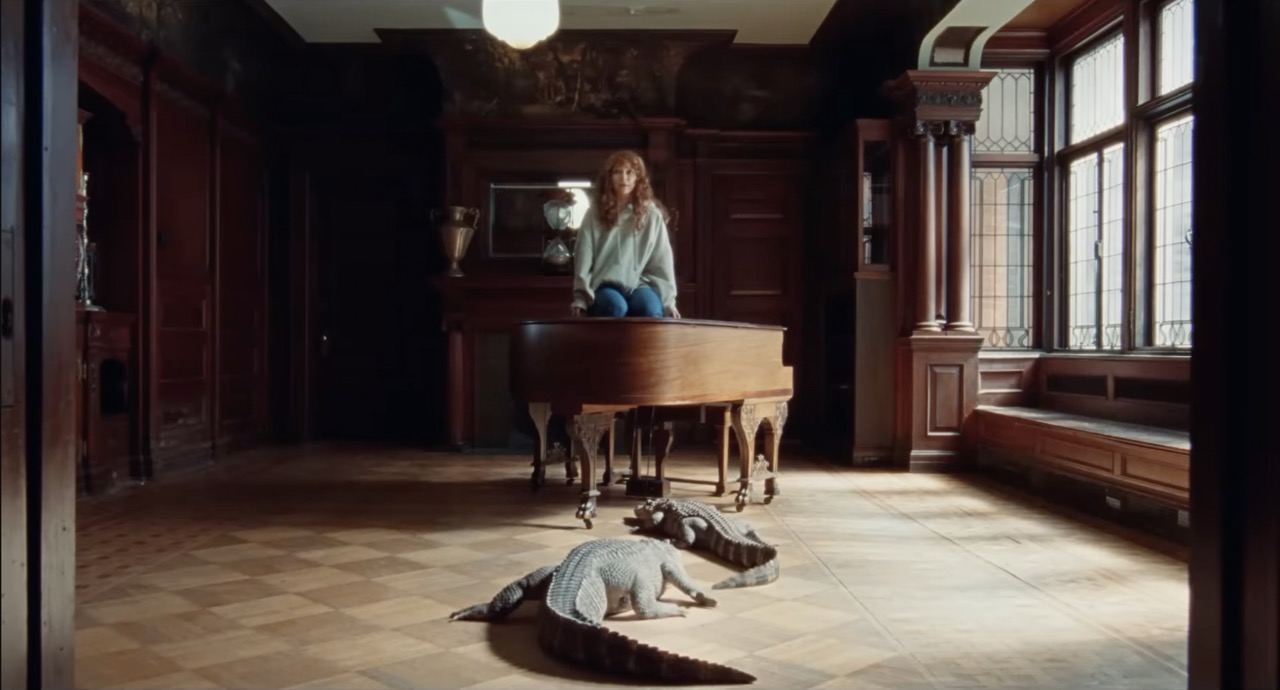
In my twice-annual sessions of Imaginative Writing, my intro-to-creative-writing class at Seattle Pacific University, I occasionally encounter a student who has decided they want to “be a writer.” They tell me about their favorite books or screenplays — usually popular franchise stories with adjacent movies and games. They tell me they tried to register for my Advanced Fiction Writing class, but discovered that the Intro course was a pre-requisite, and so they’re jumping through this inconvenient hoop. What they’re really interested in, they say, is getting published.
Experience has taught me to smile, be respectful, and quietly insist that the introductory course is not just a hoop to jump through. My writing classes are about learning and practicing the disciplines that lead to strong writing: craft exercises, freewriting, ambitious reading, small group workshopping, and revision, for starters. These will help them discover that writing can be a richly rewarding way of life — an abundant and meaningful life! — whether or not it leads to publication. (I love Annie Dillard’s anecdote in The Writing Life about a writer who was approached by a student and asked, “Do you think I could be a writer?” “‘Well,’ the writer said, ‘do you like sentences?’”)
Publishing? That’s a whole different subject. I remind my students that a whole lot of terrible writing gets published, and a whole lot of great writing is rejected by 70 publishers or more before it finds a home… if it ever finds a home. I tell them about the five year span in which I wrote five books under contract, and how they were some of the most stressful and punishing years of my life, nearly burning me out as a writer. They blink, and it’s clear to me that I must sound like one of the adults in a Peanuts cartoon. They’re not really hearing me. Their mind is already made up: They’re in love with the idea of being known as a writer, and not at all ready for the rigors of writing. Most of them have no idea what that involves. (Hint: Malcolm Gladwell wasn’t far off when he wrote about “the 10,000 hours.”)
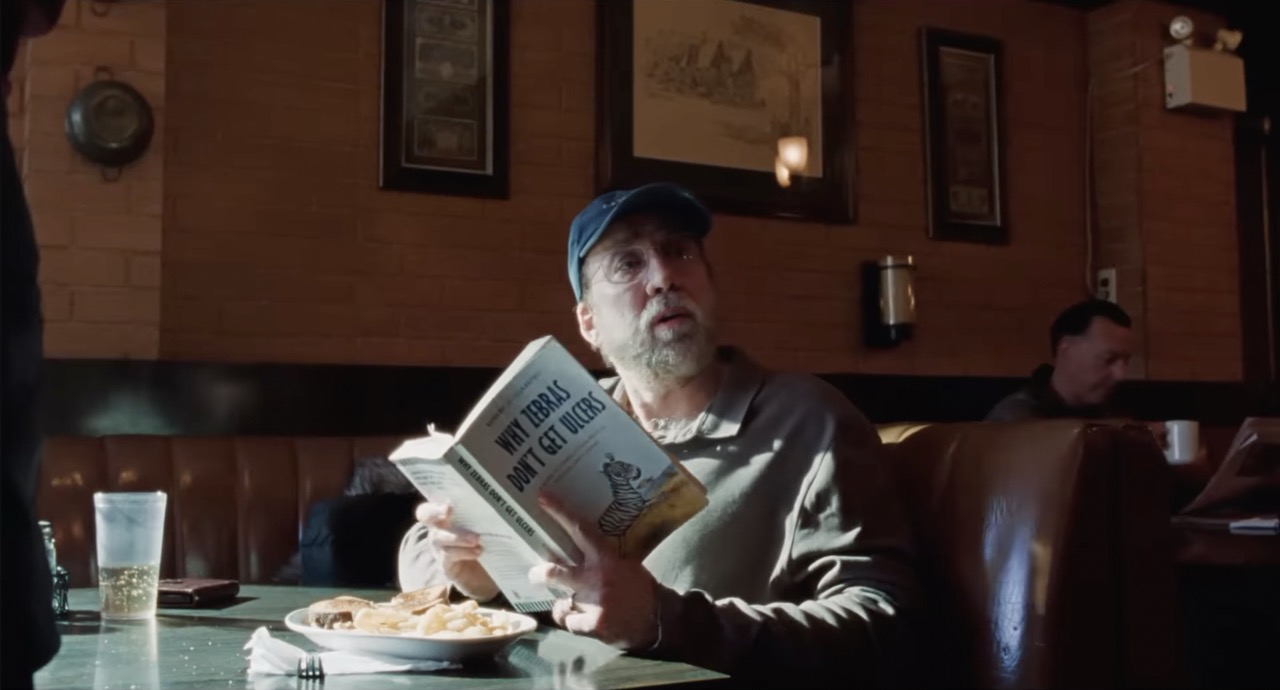
Within a few weeks’ time, these students who have decided to be writers tire of actual writing. And it turns out that the stories they felt so compelled to tell were just a grab-bag of familiar twist-ending formulas: “My narrator was dead the whole time! Surprise!” “The protagonist dies of a car accident at the last moment — nobody saw that coming!” “The food they were eating… it was people!” “Surprise! The whole thing was just a dream!”
Perhaps I sound cynical. I’m not. I find impressive writers in these classrooms too, and sometimes one of those ambitious, career-minded dreamers actually turns out to have real talent. I just graded a stack of revisions in creative nonfiction, poetry, and fiction, and I recognize those who are likely to write for the rest of their lives: They are enjoying the work of revision. I’m always willing to be surprised.
What troubles me are not the ambitious, career-minded students. What troubles me are the forces that so often shape their expectations and their preoccupations with a fast-track to fame. They don’t understand just how dangerous our desire to be recognized, celebrated, and validated can be. Attention, like any exciting drug, can become an end in itself and distract us from meaningful work. It can cost us our privacy. It can cost us our friendships and families. It can test our integrity. Typically, these dreamers don’t realize what it takes to win a cultural spotlight, much less to sustain that kind of attention once you have it. They don’t know what can happen when the heat of pop-culture glory hits you and reveals just how much — or, more likely, how little — you’re ready to offer. And they forget that the simple fact of being a fallible human paints a target on your chest, so that simple stumbles that used to be incidental have become an invitation for public condemnation and scorn.
https://youtu.be/q3x9iUL-74w?si=cso28RYJcgLAphqK
We’re surrounded every day by famous figures like Dream Scenario’s protagonist who have become popular for frivolous reasons. But even those who have earned their way to fame by their meaningful contributions to society are vulnerable when they stand before a fickle and mercurial public. In an ideal world, audiences would focus on the work, not the maker. “There is no such thing as an artist,” writes Annie Dillard in Holy the Firm. “There is only the world, lit or unlit as the light allows. When the candle is burning, who looks at the wick? When the candle is out, who needs it?” What a world it would be if we heeded those words and gave up this circus of celebrity nonsense. But that’s not the world we live in.
During the few years in the late 2000s when all of my publishing dreams were coming true, and I was thrilling at the sight of my own books at the front of Barnes & Noble bookstores, something happened to me. My relationship with writing changed. I became much more focused on engaging audiences, much less focused on the writing itself. And I nearly collapsed chasing every opportunity to promote the books, marketing and marketing, doing interview after interview, scrambling to try to sustain the momentum of potential. I wrote more hastily, more desperately, as the demands of the Machine took more and more of my energy and attention.
In Dream Scenario, Paul hasn’t even begun to do the academic writing that he wants the world to know him for. But it’s not just his writing — or, rather, his dream of writing — that suffers. He’s also failing to live up to his potential as a father, as a husband, as a member of a community. The hype of his success is filling up his life with even more nothingness. Perhaps if he were a human being first and a celebrity second, he might have some actual wisdom and work to offer when this almost-arbitrary spotlight of celebrity finds him.
That may not be the wisdom that Dream Scenario intends to impress upon us. (To be honest, given the film’s rather haphazard conclusion, I’m not exactly sure what the film ends up hoping we understand.) But it’s the wisdom that has me replaying the film in my mind.
Merriam-Webster has chosen the word authentic as the 2023 Word of the Year. And it’s a word that seems to me to be at the heart of Dream Scenario’s questions. Yes, Paul Matthews has gone viral. But does he have what it takes to do something worthwhile with that attention? Does he have what it takes to stand strong if and when the audience turns against him?
If that merciless spotlight ever swings back around to me again, I hope I’m wiser. I hope I’m prepared to make something more meaningful of the moment. And if it doesn’t? That’s just fine with me. It’s probably for the best.
The Holdovers lives up to its name
An early draft of this review was originally published on November 12, 2023,
at Give Me Some Light on Substack, months before it appeared here.
Subscribe, and you'll read many of these reviews while the films are still breaking news!
“You might try The Holdovers,” I heard myself saying to one of my former students who stopped me in the hallway to ask for a film recommendation. I’m not a big fan of Alexander Payne’s films. I find that his work tends to zigzag between off-putting cynicism and a sort of desperate sentimentality. But there’s a lot to enjoy in this one.
“I saw the trailer,” the student replied. “It’s about a professor, right? At a boys’ school? So, it’s like a new Dead Poets Society?”
I don’t remember what I said. (I was on my way to class, in a hurry, as usual.) If I’d had time, here’s what I would have said:
The Holdovers certainly feels like it could be taking place in the same world as Peter Weir’s classic boys’ school drama. Dead Poets was set on the campus of a Vermont school called Welton; The Holdovers is set among the traditional brick buildings of a New England boys’ school called Barton.
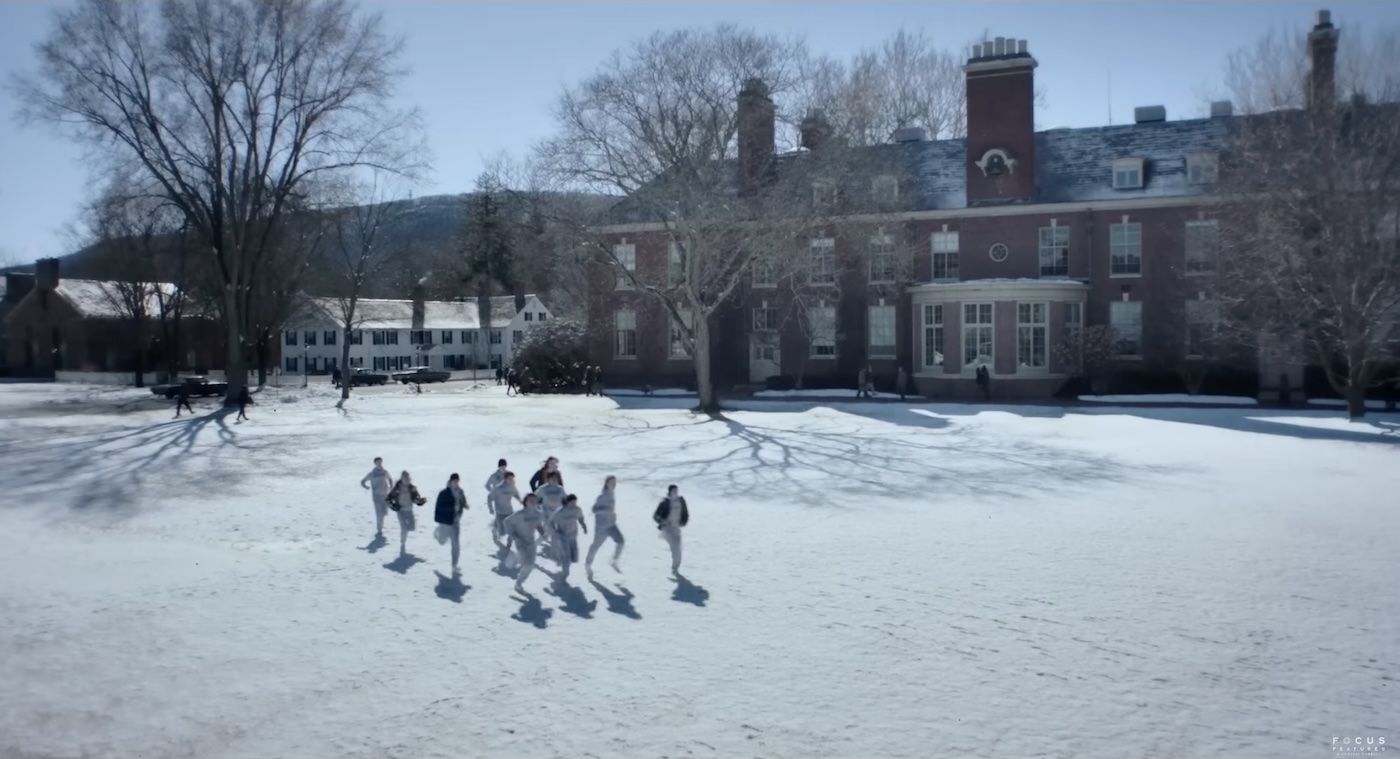
But the contrasts are more interesting than the similarities. Dead Poets took place in 1959, as Elvis was on the rise and The Beatles were about to blow up the pop culture world. Counterculture was about to challenge and change American culture’s strict norms. The Holdovers, by contrast, takes place in 1970, and the boys of Welton are fighting to avoid madness, trapped in a world prescribed by their controlling parents and an even more controlling patriarchal academy full of faculty who grumble about the death of culture.
The narratives follow arcs that are thematically complementary but hierarchically flipped: Weir’s film is about an unconventional teacher (played by the unconventional Robin Williams) who challenges tradition and champions creativity, poetry, and passion. Payne’s film is about a maddeningly legalistic classics professor (played by the wonderfully curmudgeonly Paul Giamatti) who, stubbornly rooted in tradition, butts heads and locks horns with students who would challenge him to become more creative, more spontaneous, more open-minded. The pioneering teacher of Dead Poets clashes with his institution in hopes of saving his students from cultural suffocation. The old-school prof of The Holdovers… well, he is the institution — so much so that even his colleagues might recommend he be institutional-ized. He’s the one who needs saving.
For the first hour, the story unfolds as a three-strand braid, following characters stranded on campus during the holiday break:
Giamatti’s Professor Hunham, his casual conversation as peppered with Latin phrases and literary allusions as his lectures, staggers around the corridors “babysitting” the titular “holdovers” — the boys who have nowhere else to go. It’s clear that his obnoxiousness is a front for some kind of deep hurt, but the nature of that burden won’t become evident until the trials of this purgatorial season wear him down and expose the wounds.
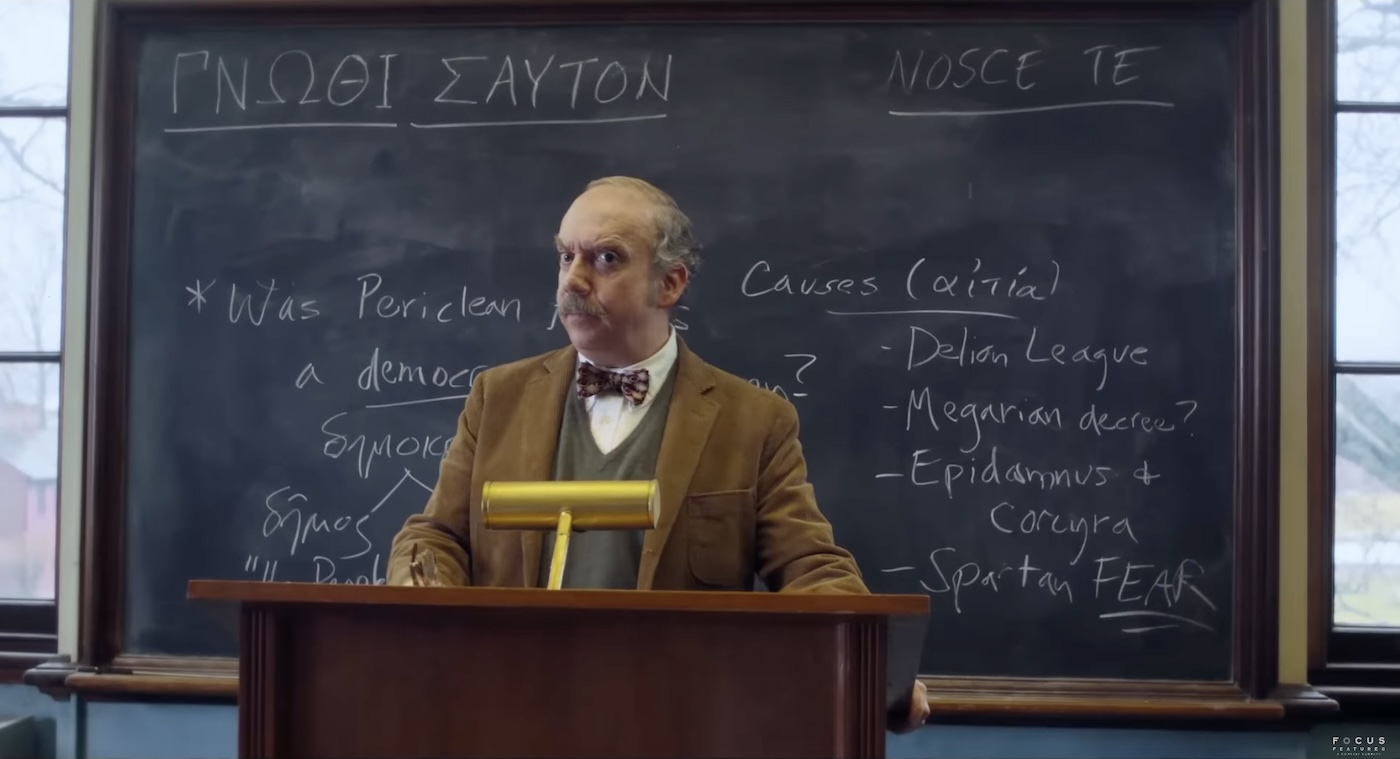
One of the stranded, a smart but obviously wounded young man named Angus (the very impressive newcomer Dominic Sessa), hates Hunham as much as the other students. But he’s quite possibly the most observant and mature of the bunch. And before long he’s testing his intolerable supervisor’s patience not so much to punish him as to figure out what makes this grouch such a monster. (It’s obvious that Angus, too, is destined to reveal dark secrets.
Meanwhile, both Hunham and Angus are fed by Mary Lamb (Da'Vine Joy Randolph), the head cook and administrator of the school cafeteria. The source of Mary’s hurt is obvious: Her young son was the only Barton boy sent to fight in Vietnam, lacking the privilege and prejudicial protection of the majority. Mary’s discernment is as sharp as any of her kitchen knives; she sees through Hunham’s bluster and she knows what Angus needs.
(I cannot deny that filmmaker Chad Hartigan has hit the nail on the head in his Letterboxd notes about this one: “Da'Vine Joy Randolph gave an electric, star-making performance in Dolemite is My Name that didn't get her a sniff of awards attention but as soon as she plays the help in a white people movie the Academy is gonna take notice.” [Sigh.] How long, O Lord, must we sing this song?)
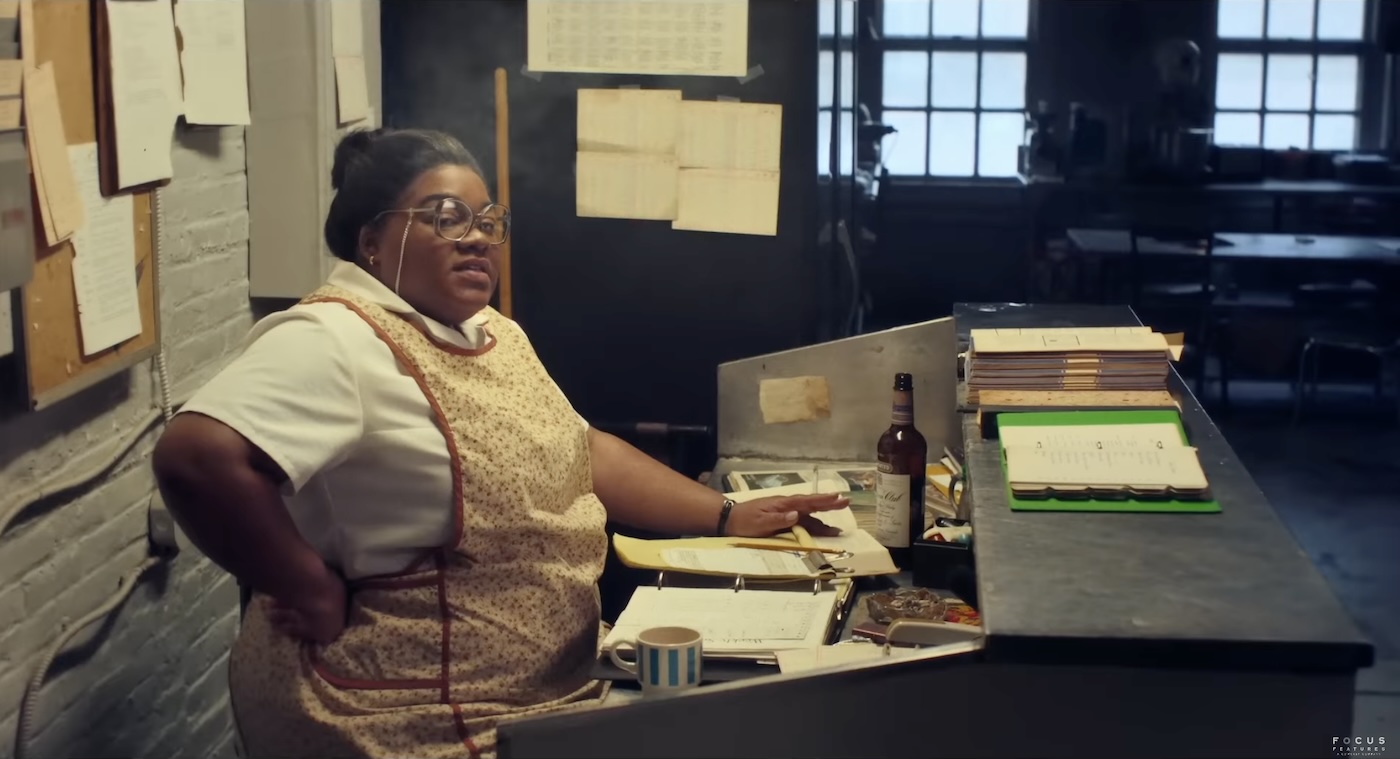
Over the course of their brief but torturous (and snowbound) detention on campus, they will have no choice but to cope with one another. What they do choose, however, is surprising: Hunham tests the electric fences that pen him in. Hunham chooses to loosen his famously unforgiving standards as he begins to care for the young man. And Mary will give her grief something to do: She’ll provoke Hunham to emerge from his shell and start discovering the world through the frame of the television. What’s more—she’ll support Angus in pursuing what he really needs. Their conversations and collisions will lead them on episodic adventures: to a hospital emergency room, to a bowling alley, to a Christmas party, and beyond.
The farther they go from their campus routines, the more they learn about each other’s secrets, and, well… the more the movie begins to test our patience with a sequence of shamelessly tearjerking scenes that feel less inclined toward literary integrity and more inclined towards easy crowd-pleasing. It’s bound to be the kind of movie that earns a bunch of Oscar nominations but then quickly becomes just another title on Payne’s hit-and-miss IMDB record.
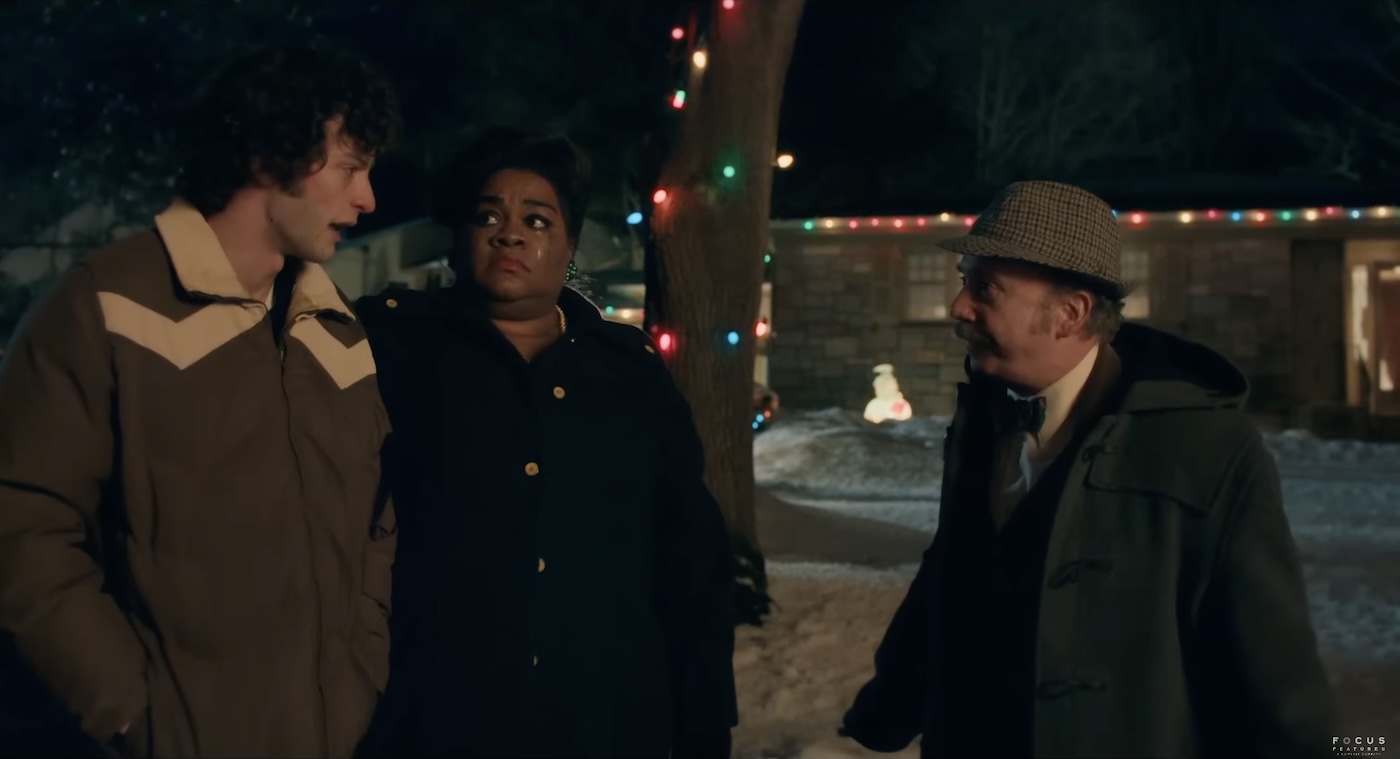
Yes, unfortunately, The Holdovers really lives up to its name. It keeps us at least 15 minutes too long — I might go so far as to say 30 — and I counted at least three moments where I might have faded the film out, subtly and quietly. But Payne keeps prodding it further, as if he’s never quite satisfied with any of these understated moments but wants to go for the Oscar-moment jugular, concocting some kind of confrontation that will push all the right buttons.
And that’s a shame, because I enjoy the world he’s crafted here. It’s a film critic’s responsibility to recognize this aesthetic as an homage to 1970s Hal Ashby classics, right down to the folk-song interstitial flourishes. (Damien Jurado is a surprisingly effective stand-in for Cat Stevens — so much so that we didn’t really need an actual Cat Stevens number, but we get that anyway.)
But Ashby films always remain rebellious enough, earnest enough in their anti-establishment impulses, to avoid ever surrendering to corporate influence. And Payne’s film feels anxious about achieving heavy buzz, and so it ends up reminding me even more of early '90s Oscar bait like Scent of a Woman, scenarios that build toward a character taking an heroically moral stand in a moment of extreme pressure, something to make us cheer and cry.
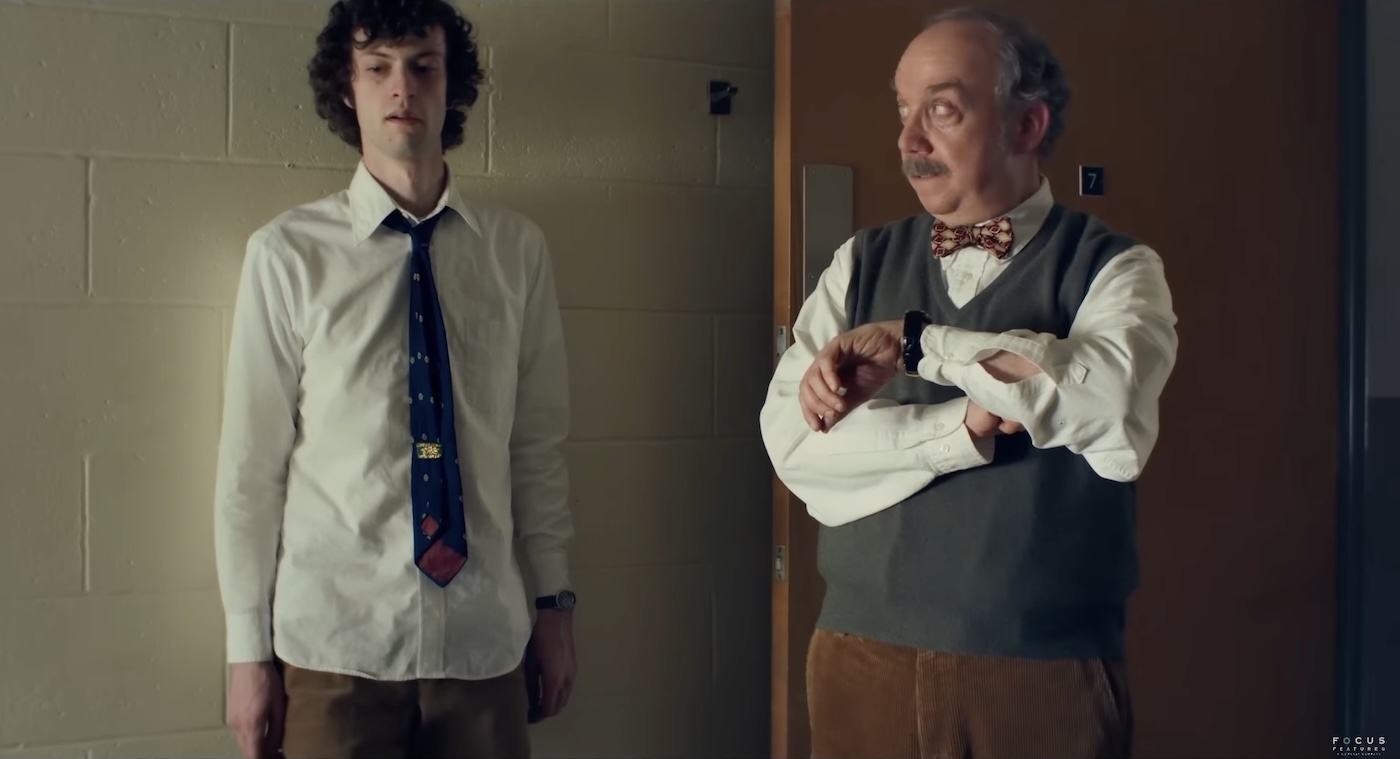
Come to think of it, Dead Poets does this too, but it does so in a way that leaves us uncertain about the consequences. For all we know, several of those boys will get kicked out of school. And Robin Williams’ Mr. Keating might get hit with lawsuits. By contrast, The Holdovers ends a little too neatly for me,
Sideways remains the only Alexander Payne film where the tension between cynicism and sentimentality has mostly worked for me (and even that movie has a scene that I count a jarring, ugly misstep into cruel caricature). This movie errs in the other direction. It never feels dangerous; instead, it feels a little too sentimental.
But I'm inclined to say this one is still worth seeing for its playful homage to a very specific slice of cinema history, for its three lead performances, and for a few very good scenes that come before those last, long 30 minutes.
Beauty and the rock'n'roll beast: Sofia Coppola's Priscilla
An early draft of this review was originally published on November 8, 2023,
at Give Me Some Light on Substack, months before it appeared here.
Subscribe, and you'll read many of these reviews while the films are still breaking news!
Does the camera love Cailee Spaeny’s Priscilla Presley more than any young protagonist in Sofia Coppola’s filmography?
That would be quite a claim to make. Let’s see:
- Kirsten Dunst’s cloistered Lux Lisbon is angelic and ethereal in The Virgin Suicides (1999);
- Scarlett Johansson’s Charlotte in Lost in Translation (2003), tender and pensive in dark hotel rooms and the amber glow of hotel lounges.
- Dunst is a canvas for mischievous makeovers as Marie Antoinette (2006).
- In Somewhere (2010), Elle Fanning’s Cleo has the wide-eyed curiosity of a four-year-old in a teenager’s undecided definition.
- Audacious trespassers and thieves, fronted by Emma Watson strong-willed ringleader in The Bling Ring (2013), invest so willfully in superficial surfaces that the void behind their flirtatious gazes is funny and frightening.
- And the candlelit frills-and-lace dresses of Fanning, Dunst, and Nicole Kidman in The Beguiled (2017) seem like a wounded soldier’s morphine-induced dream.
So many incredible actresses. So many indelible performances. And all of them captured with reverence through Coppola’s loving lenses.
Nevertheless, I’m going to say yes: Spaeny, convincingly playing a 14-year-old dressed up to look 24, and respectfully adored by cinematographer Philippe Le Sourd, is so magnetic in every scene of Priscilla that even Jacob Elordi’s Elvis almost dissolves when she’s onscreen beside her.
Right away, Coppola has her audience right where she wants us: We want to intervene and save Spaeny’s Priscilla from the cyclone of celebrity that is going to carry her out of her Kansas and into Elvis’s Oz, while at the same time we cannot wait to see how fame and fortune transform her into an influential icon envied by women twice or three times her age. This is, as they call it in this buzzy business, “a star-making performance.” And that adds yet another layer of conflict to the proceedings: We’re watching Spaeny’s ascent to superstar status even as she brings to life a cautionary tale about that very thing.

From the moment we see her in the diner at the film’s opening — lonely, vulnerable, a tangle of teenage uncertainties, thinking she knows better than her parents (as we all did at that age), and failing to conceal her restless longings — we’re hooked. There’s a Disney Princess light in her eyes. We have no doubt that a global superstar, one so worshipped and successful that nobody dares deny him anything, will notice this walking “I Want” song. We have no trouble believing that — even though (cue the Michael Caine accent) she’s only 14 years old! — the Beast will seize upon the Beauty as his ideal and lock her up in his palace like a trophy. It’s discomforting because we disapprove of this before it happens, and yet we ourselves cannot wait for it to happen. Spaeny has the rare and mysterious power that defines iconic actresses, and we’re already longing to see all of the versions of Barbie to Elvis’s Ken that she can become.
This trouble — hating what’s happening even as we’re mesmerized — sticks with us through the whole two hours: It’s painful to watch as Priscilla’s parents (Ari Cohen and Dagmara Dominczyk) lose their feeble resolve to protect their daughter from the charms of the circling celebrity. They’re easily seduced, as she is, by Elvis’s magnetism. And while it’s one of cinema’s most familiar tragic story arcs — a young woman doomed to serve as a dress-up doll for a manipulative and self-destructive Svengali in a world made for men — it’s as potent and relevant as ever.

In Coppola’s lush, dreamlike recreation of Priscilla Presley’s own testimony (the film is based on her own memoirs), we watch the young, starstruck, and frightfully naive young Priscilla Ann Wagner become the live-in (and, thus, housebound) girlfriend of “the King of Rock and Roll”; wander those Graceland corridors in a downward spiral of debilitating loneliness and uncertainty; demand reassurance after his early affairs come to light; win his worthless vows of devotion and fidelity; and become the mother of his child. Her charismatic controller orders her not to change, but we know it’s impossible: He’s captured a human being in her most transitional and formative years. Ever so slowly, she will writhe in the realization of the trap into which she has walked so willingly, so eagerly, so naively. As her self-knowledge grows, so does her doubt about his declarations of devotion — and this kindles a dissatisfaction over the freedoms he enjoys but she is denied. She inevitably becomes for Elvis a conscience, so long as he’s willing to tolerate one; and thus, she’s an intensifying reminder of his vanity.
We should have seen this movie coming: it’s the perfect match of subject and artist. Sofia Coppola makes movies about young women who live in varying states of isolation, their perspectives and priorities shaped and misshapen by the bubbles in which they grow up.

It was a bubble of parental over-protection and control in The Virgin Suicides. Bubbles created by show business stranded the protagonists of Lost in Translation and Somewhere. Politics, patriarchy, and wealth kept Marie Antoinette in captivity. The women of The Beguiled are stranded in wartime isolation, but they’re also bound up in the systemic misogyny of their culture.
In all of these contexts, film critics keep on finding good reason to speculate about Coppola’s attraction to such stories. After all, she grew up in a sort of fantasy world herself, the daughter of Francis Ford Coppola and a part of that American show business dynasty. Her movies have always seemed like testimony by way of creative analogy. It’s clear that she’s wide awake to the alluring and dangerously distorting effects of such privilege, as well as to the ways in which girls can lose agency under the close watch of controlling father figures. And her movies sometimes follow their restless captives in some kind of search for escape into something that seems more authentic.
It’s surprising that she didn’t bring Princess Diana to the screen before Pablo Larrain made Spencer. It seemed a perfect biopic subject for her after Marie Antoinette — but would it have been too similar a project?
The same question aggravates me a bit as I reflect on Priscilla. It has a lot in common with Spencer, so much so that I wonder if a double feature of the films would make for a fascinating study or seem merely redundant. And it has such tremendous thematic and aesthetic overlap with all of Coppola’s previous work, that it’s beginning to feel like this auteur’s filmography has become something of a bubble in itself, one I’d like to see her break free from. (2020’s On the Rocks, with Bill Murray and Rashida Jones, was something of a departure in subject and style, but that film felt more like something she made casually, improvisationally, and for fun between more serious features.) Priscilla, like all of the young women who look so good in such dehumanizing contexts, enchants us through what critic Hannah Strong calls Coppola’s “hyper-feminine aesthetic,” a “surface appeal” that seduces even as we realize that it’s draped over “a desire for freedom at any cost.”

I’m beginning to sense some diminishing returns in this redundancy: One might be tempted to say that Coppola is so in love with the glory of these toxic fantasy lands that the greater effect of her work is to increase their gravitational pull rather than to instill in us a wisdom about the abuse that takes place there. In her New York Film Festival capsule review, Veronica Fitzpatrick notes that “Priscilla is best when it’s sensual, not didactic, but that doesn’t mean it doesn’t do both.” She’s right, and this may be most evident in a scene where Elvis condemns Priscilla's preferences in outfits, strictly instructing her to wear only certain things that match his preferences. Spaeny is dazzling in these costumes, and in this context. And I started having PTSD flashbacks to that nightmarish scene in Hitchcock’s Vertigo where Scotty forces Judy to wear certain things and do her hair a certain way, dismissing the dress she clearly prefers. But isn't the movie itself clearly taking most of its pleasure in, and investing most of its energy in, aestheticizing Priscilla as a '60s fashion icon? Hitchcock’s focus is on the psychosis at work in this dynamic. Coppola’s, someone might persuasively argue, is on the pleasure of deciding for ourselves which dress is most enchanting on Spaeny. Fitzpatrick herself also admits that the movie is “unable to help itself from doing what it wants to critique.” I’m not quite ready to defend the film against any concerns that, on the subject of the objectification of women, it might be doing more harm than good.
Still, artists are who they are — they come from somewhere, they know certain important things based on their experience, and, by virtue of the limits of those experiences, they don’t know other important things. We love to find those threads that connect individual entries in a visionary director’s portfolio, threads that give the body of work a recognizably human voice. It would be presumptuous to expect movies from Sofia Coppola that aren’t somehow rooted in her most fundamental sympathies. Isn’t that often the dichotomy of auteurism? We expect to see manic neuroses, narcissism, self-destructive amorality, and even pedophilia in Woody Allen movies, and I’ve given hoping to see some kind of breakthrough, any story about an awakening conscience from him. Nevertheless, I always hope to have a sense that an artist is growing — not only in their abilities but in their curiosities and wisdom. And I think Coppola has explored stories like this before in ways that have offered richer rewards.

What would interest me most is seeing what kind of story she might tell about the “After” of this movie’s “Before.” Unlike Coppola (apparently), I’m not as interested in Priscilla’s angst as I am by what she might become when those bending borders finally break under pressure. We are so well-versed, as moviegoers, in the plight of the princess trapped in a tower. And that brings a sense of frustrating stasis to the whole affair. While Spaeny, who I cannot help but see as a miniature Natalie Portman/Shailene Woodley hybrid, is an exquisite avatar — not only for Priscilla herself, but for any promising young woman seduced by a fantasy* — I cannot shake the sense that we’re not really getting a strong sense of her capacities as an actress, as Coppola keeps her bound up in iconographic poses.
I should pause here to acknowledge that one of the movie’s most surprising and unsettling effects is how it so quickly and so convincingly turned me against the very Elvis for whom I was feeling empathy and admiration just a few months ago watching Baz Luhrmann’s Elvis. Priscilla, more than any film I can remember seeing in recent years, has revealed to me how susceptible I am to a strong filmmaker’s rhetoric. What do I really make of Elvis Presley, perhaps the most definitive American icon? At this point, I don’t know. But insofar as Presley’s testimony via Coppola’s dramatization is credible, I have to revise my understanding of Elvis’s legacy going forward to reckon with these chapters, which expose an inexcusably predatory and exploitative aspect of his character.

Jacob Elordi’s performance as Elvis rarely adds up to more than a passable impression of the famously idiosyncratic star. The physical resemblance is not particularly convincing. (The astonishing performance by Austin Butler just last year is still so vivid in my memory that it’s hard not to be thinking of his superiority in every scene of this film.) Maybe if I’d seen Elordi’s work in Euphoria I might have a better sense of what drew Coppola to cast him. But in his cartoonishly lean and looming stature, he emphasizes just how dominant Elvis was in this relationship with a child; Coppola seems to know this and uses it to powerful effect. And for that, I am grateful. Moviegoers need balanced, nuanced studies of their cultural icons. Luhrmann’s Elvis had its virtues, but Coppola provides a much-needed counternarrative.
Much of the press around this film has focused on the fact that the Elvis estate refused to permit Coppola to use Elvis’s songs in her movie. But you know what? I’m glad. This movie gives the King just the right amount of attention, and we don’t need any reminders of his strengths here. Elvis has received more than his due when it comes to adoration and reward for his art. And this movie isn’t about him. Relying upon her familiar finesse with contemporary pop soundtracks, Coppola gives the film a perfectly gauzy, dreamy sound that enhances the melancholy of Priscilla’s state of suspension in superficiality.

In fact, it’s not imagery that I will remember about the film’s jarringly abrupt conclusion. It’s a song. Coppola’s talents as a playlist maker remains untouchable. In her deep-dive examination of the director’s musical journeys, Sydney Urbanek writes, “To think of Coppola’s early videos as a mere preamble to her features is to sidestep how she still cuts her action to accommodate the songs she loves rather than the other way around….” And Priscilla’s climactic needle drop is a knockout. Indeed, it’s the best thing about the finale. I’ll save the surprise for you to discover. Suffice it to say that I cheered when I realized what was playing, even though I wouldn’t learn until after the credits rolled that there are important historical motivations for applying that song to Priscilla’s prison break. (Look it up.) It's an inspired choice for an otherwise underwhelming conclusion.
Is the song supposed to spell out for us what Priscilla is thinking as she makes her famous exit from Graceland and takes her first step into freedom and autonomy? I don’t know. I’m not sure what to make of the ending, actually. I come away more disappointed than intrigued, as that moment gave me a fleeting surge of hope that the story was about to take us somewhere new, into a glimpse of the woman Priscilla would become. Maybe I was expecting too much. Maybe Coppola can’t quite imagine a character outside of a dehumanizing bubble.
Larrain’s Spencer concludes with the same startling abruptness, and yet that final moment felt just right. For all of the creative license Larrain took with Diana’s historical account, and for all of the presumption he brought to his depiction of that icon’s interior life, he created for us a three-dimensional human being. His Diana is possessed of a fierce intelligence beyond the hairdos and dresses. We get more than just glimpses of who she really is in her intimate conversations with her assistants, and in moments of joy and tenderness with her children. The last image of Spencer is more complicated and interesting — and thus more memorable — as well. The runaway princess seems to have landed on another, equally challenging planet.

It’s interesting to me that two more of the year’s biggest movies conclude with their leading ladies turning their backs on the men who adore them and walking off into a future alone. It happens in Martin Scorsese’s Killers of the Flower Moon. And it happens even more memorably in Greta Gerwig’s Barbie, which concludes with a celebratory flourish, as Barbie begins to define herself beyond the context of a toxic co-dependency. It leaves me wondering what a Sofia Coppola Barbie movie might have looked like. I suspect it would have been soft, quiet, lush, luxuriant, and aching with melancholy. It would have indulged with greater reverence in hair, makeup, and costumes. It would have, come to think of it, been a lot like Priscilla.
* I was tempted to write this reflection as a comparison of Priscilla and that old Jim Henson/George Lucas rock-star-chasing-an-underaged-muse fairy tale Labyrinth.
Misgivings about "a masterpiece": Killers of the Flower Moon
An early draft of this review was originally published on October 28, 2023,
at Give Me Some Light on Substack, months before it appeared here.
Subscribe, and you'll read many of these reviews while the films are still breaking news!
Ban this teaching, Ron DeSantis. I dare you.
(Apparently, Oklahoma is working on doing that very thing — erasing an essential truth from American history so that new generations live in ignorance. Oklahoma: Land of the Wisdom-Free, Home of the Less-than-Brave!)
Did you know that the peak of Google searching for “Mike Pence” happened when a fly landed on his head on national television? That fly may be the most famous of its kind since the fly who landed on Paul Freeman’s face and appeared to crawl into his mouth during a key scene in 1981’s Raiders of the Lost Ark.
I want to know how director Martin Scorsese managed to track down the Mike Pence Fly and then, in the production of Killers of the Flower Moon, direct it to land symbolically on the heads of characters whose hearts have gone dead. I need a journalist to ask the big questions! And let's get that bug a supporting actor nomination!
But seriously, I have trouble believing the appearance of a fly on the head of Sheriff William Hale — during a scene in which he is feigning concern for local Native Americans, and covering up his conspiratorially murderous endeavors against those same people — is just a coincidence. (No, that’s not a spoiler, unless you’re new to the idea that the First Peoples have been the targets of a genocidal strategies since so-called “American history” began.) There are other moments later in Killers of the Flower Moon when flies buzz about the heads of other criminal characters as if to draw attention to their cold, dead hearts, and their distinctly American malevolence.

Killers belongs in the genre we call “True Crime,” a longstanding tradition of American entertainment that the movie eventually acknowledges—and, before it’s over, explicitly dramatizes. The film, like the book by David Grann that inspired it, in an exposé revealing crimes against humanity that white supremacists and Christian nationalists would rather erase from school history classes—carefully documented conspiracies that have gone unpunished and that contradict the very principles that patriotic Americans have typically boasted about. It reveals that, for all of our self-congratulation over defeating the Nazis in World War II, we are equally capable of—and guilty of—race-based genocide.
And Scorsese isn’t just focused on what white settlers, with the cooperation of their “by the white people, for the white people” government, have done (and continue doing) to Native Americans. There’s a smart glance sideways, as this story’s violence unfolds, toward news footage of the Tulsa Race Massacre.
The movie is not subtle in suggesting that if we don’t ever—even now, in 2023—face fully our moral failings and complicity in this violence, if we can’t take action to make amends, we encourage the undeniable swelling of Nazism and other tumors of hatred and violence within the bodies of our own communities and cultures. So long as we support, enable, and make excuses for criminals in positions of power—as Pence did for Trump, and as our weak-willed protagonist does in this story—we are bound to increase a debt of depravity for which the bill will someday come due.
Killers of the Flower Moon has so much more to offer than an historical whodunnit.

Grann’s deeply troubling account is about a former Texas Ranger who joins the FBI in its early days and is sent to investigate relentless murders of the Osage people in Oklahoma. Scorsese’s movie, staying true to the historical details, reimagines the narrative, postponing any coverage of that investigation until after we’ve become invested in the community where the crimes are carried out.
We’re introduced instead to Ernest Berkhart (Leonardo DiCaprio), a slow-witted World War I war veteran who returns to his Oklahoma-based family in Osage territory to receive a hero’s welcome and find a new life working for his uncle, William “Bill” Hale (Robert De Niro), the local deputy sheriff. Ernest’s face isi almost always contorted in efforts to make sense of this society, his responsibilities, and his own conflicted conscience. He’s surprised by, confused by, and even a little aggravated by the fact that the Native Americans there are among the wealthiest Americans he has ever met, enjoying the rewards of having found oil on their land. Like the cab man famously played by De Niro himself almost a half-century ago in Scorsese’s early masterpiece Taxi Driver, Ernest is easily confused and deeply insecure. Like Henry Hill in Scorsese’s GoodFellas, he’s easily duped and manipulated into carrying out the dastardly deeds of a criminal mastermind. And like Kichijiro in Scorsese’s adaptation of Shasuko Endo’s Silence, Ernest is doomed to become a fear-driven fool, prone to betraying even those he loves the most when the devils who control him require it.
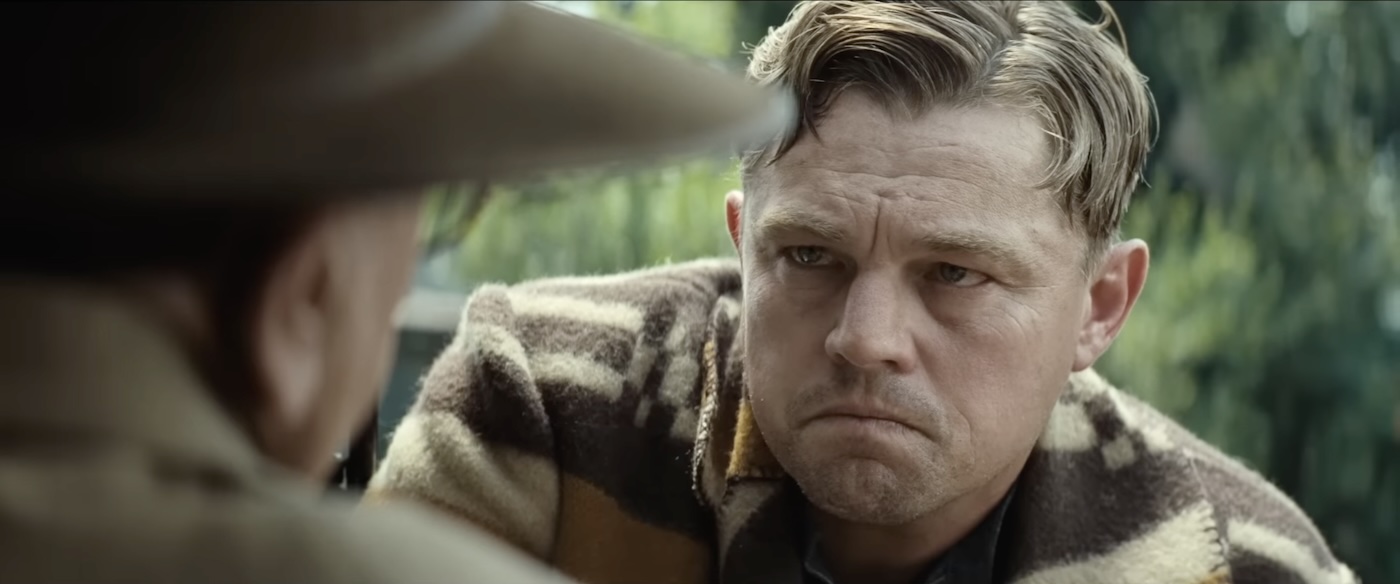
When Ernest falls for Molly (Lily Gladstone), a local Osage woman who matches the “body type” he describes to his uncle as his sexual preference, Hale seizes this opportunity to secure their marriage in a way that will also re-route fortunes from Molly’s family toward his own.
In the movie’s opening scenes, Hale instructs Ernest to “educate” himself on the Osage through a children’s book about their history. If you’ve seen the trailer for Killers of the Flower Moon, you’ve heard Ernest repeatedly sound out the words of a question: “Can you find the wolves in this picture?” And the implication is clear: In this film, some villains may be obvious. Others may lurk in the shadows, wearing the “sheep’s clothing” of civil servants, philanthropy, healing, and faith. As Ernest scowls at a picture-puzzle illustration in the book, he lacks the imagination and intellect to realize that his own kin are deliberately embedding and entangling themselves in Osage communities like predators stalking prey with intent to take their land, their oil, and their fortunes.
The most obvious of the villains is probably clear to us through casting alone: De Niro plays Sheriff Hale as a charismatic politician with all the right (and the “Right”) religious vocabulary, feigning Christian conviction while pulling strings to rob the Osage blind. And he’s good enough at this game that Osage elders honor him as a champion of their cause, even relying on his resources to seek out those responsible for the “epidemic” of murders in their community.

Like the proverbial frog in the pot of boiling water—or, in this case, boiling oil—Ernest is easily persuaded to embrace a contradiction that will break him apart from within: Even as he loves Molly and starts a family with her, he’s soon following his uncle’s orders for increasingly flagrant violence, an Oklahoman application of nationwide campaigns advancing a genocide of Native peoples. Even as Ernest struggles with the harrowing and debilitating intensity of Molly’s grief over mounting losses to her family, he goes on covering up his uncle’s sins, even negotiating terms with notorious hit men himself, unable to persuade himself that the man he’s been conditioned to adore could be such a serpent… such a wolf.
As many critics have observed already — I’m especially grateful for Alissa Wilkinson’s outstanding reflection at Vox.com — Killers of the Flower Moon continues a profound trend in Scorsese’s recent filmmaking. As in Silence and The Irishman, he is stripping away the glamour and glory that he afforded criminals in films from GoodFellas to The Wolf of Wall Street. While his movies have never condoned the evils of the gangsters that so fascinate him, they have always given more attention to the charismatic characters committing the crimes than to those who have suffered from the greed and the violence.

I hold that we need Taxi Driver, for all of its horrific bloodshed. We need stories that inspire our empathy for the poor, the social outcasts, the alienated young men who can easily, if they are denied care and guidance, and if they grow up in a context of toxic, gun-worshipping masculinity, become sociopathic killers.
What’s more, much to the chagrin of many of my Christian colleagues, I think we need The Wolf of Wall Street too. Its extremely R-rated portrayals of misogyny serve to deconstruct a corrupt cultural iconography. It peels away the flashy facades of those who live in wealth and privilege, showing us the cancers rotting the heart of the American experiment. (Even recently, Christian film critics were calling me out for approving of “pornography.” What Scorsese’s doing isn’t pornography. He’s placing images equivalent to those that seduce young men into dangerous criminal gangs right alongside images of the devastating consequences of such lifestyles. It’s an effective, if risky, bait-and-switch.) The Wolf of Wall Street has already served us as a prophetic vision of America’s past, present, and future: It showed us how a capitalist society, devoid of moral vision, enables and empowers compulsive liars. It all but predicted that we would soon promote a con artist like Jordan Belfort to the office of President. I think almost daily of the irony that most evangelicals who, making a fist of one hand and shaking it at me for praising The Wolf of Wall Street and its morally depraved antihero, will simultaneously, with their other hand, vote for politicians who behave just as malevolently as that antihero. They can’t stand the discomfort they feel when they see such behavior on the screen, even as they enable an Antichrist guilty of the same behavior to reach the White House, hoping he’ll deliver on his false promises to them.
Having said that, I am grateful to see Scorsese, in these later years of his career, expanding the frame of his vision. In Killers of the Flower Moon, he gives unprecedented attention to those who suffer from the crimes of the gangsters who so fascinate him. The compassion and lament woven into the fabric of this tapestry represent a deepening of conscience and wisdom. He is bearing witness to the deep hypocrisy of this so-called “Christian nation.” He is doing his best to educate us about our cultural sins and the moral responsibility we bear to make amends for them. In Killers of the Flower Moon, he does this in a way that admits his own complicity in a history of injustice. All of this seems like a progression from things he said to me when I interviewed him during the theatrical run of Silence. (You can read that conversation here.)
The fact that he’s working on yet another film about Jesus, at the suggestion of Pope Francis himself, fills me with anticipation and hope. I have great respect for his first film about Jesus, despite its weaknesses, and I hold in even higher esteem his reverent adaptation of Silence with its portrait of devout Christian missionaries discovering the consequences of presumptuous evangelism.
Nevertheless, I find that Killers of the Flower Moon leaves me with deeply conflicted thoughts and feelings.
As big-screen entertainment, it is impressively artful on almost every level of craft, from the performances (with one notable exception that I will critique momentarily), to the period recreation of 1920s, to the powerful scoring by Robbie Robertson. The 3-hours and 25-minutes fly by in what feels more like 120.
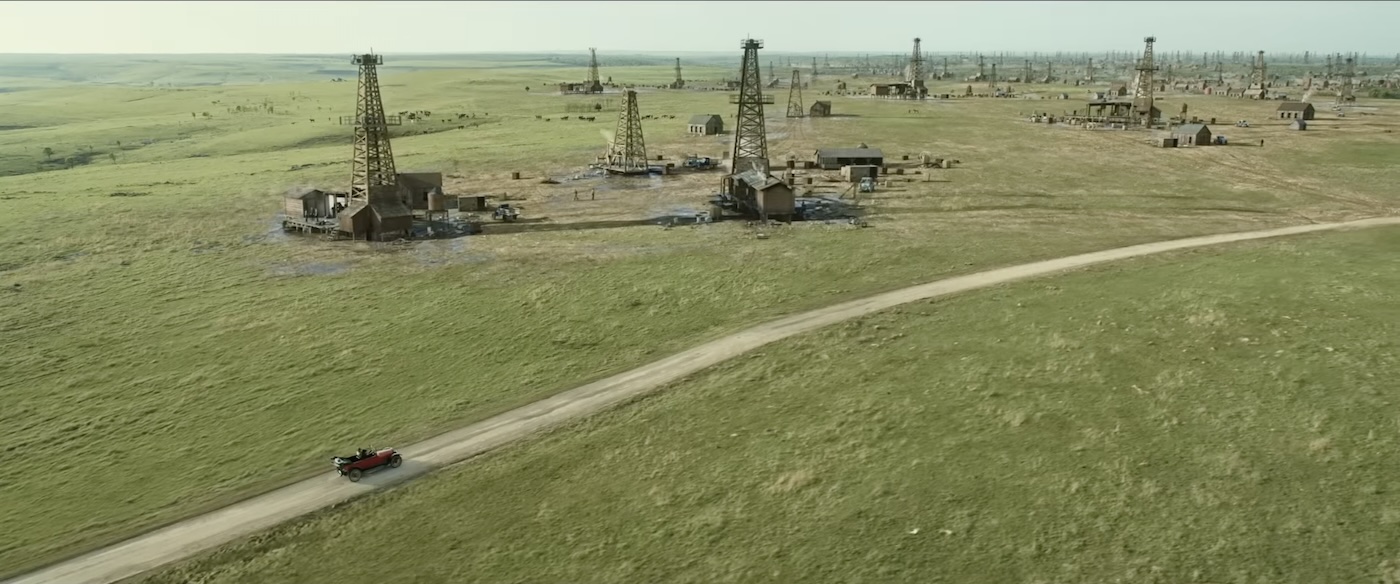
But while I commend Scorsese’s conscientious efforts to spotlight the sufferings of the Osage people, and to give Lily Gladstone’s Molly the most prominent role of any woman in any of his 20+ feature films, I feel that the great director’s preoccupation with “wolves” too often dominates this picture. For all of the energy he invests in honoring the First Peoples by revealing how they were deceived and slaughtered, his fascination with the depravity of powerful men still seems the subject he’s most excited about dramatizing.
And that makes Killers of the Flower Moon, in spite of its notable strengths, feel like a missed opportunity.
The movie is strongest when the camera is focused on actors playing the Osage community, particularly Lily Gladstone as Molly. Or, when it is focused on Robert De Niro, who is doing some of his best work here since Michael Mann’s Heat in 1995.
I'll probably be in the extreme minority on this point — but here we go: I find Leonardo DiCaprio's lead performance to be, for all of its Oscar-begging showiness, the film's weakest link. It’s not that his acting is poor, exactly; it’s that there’s just too much of it. He seems to be striving so hard for a Brando-level transformation here (are those cotton balls he's stuffed into his cheeks?), that he seems almost desperately needy for attention whenever he’s sharing a scene. This is a movie that needs generous performances.
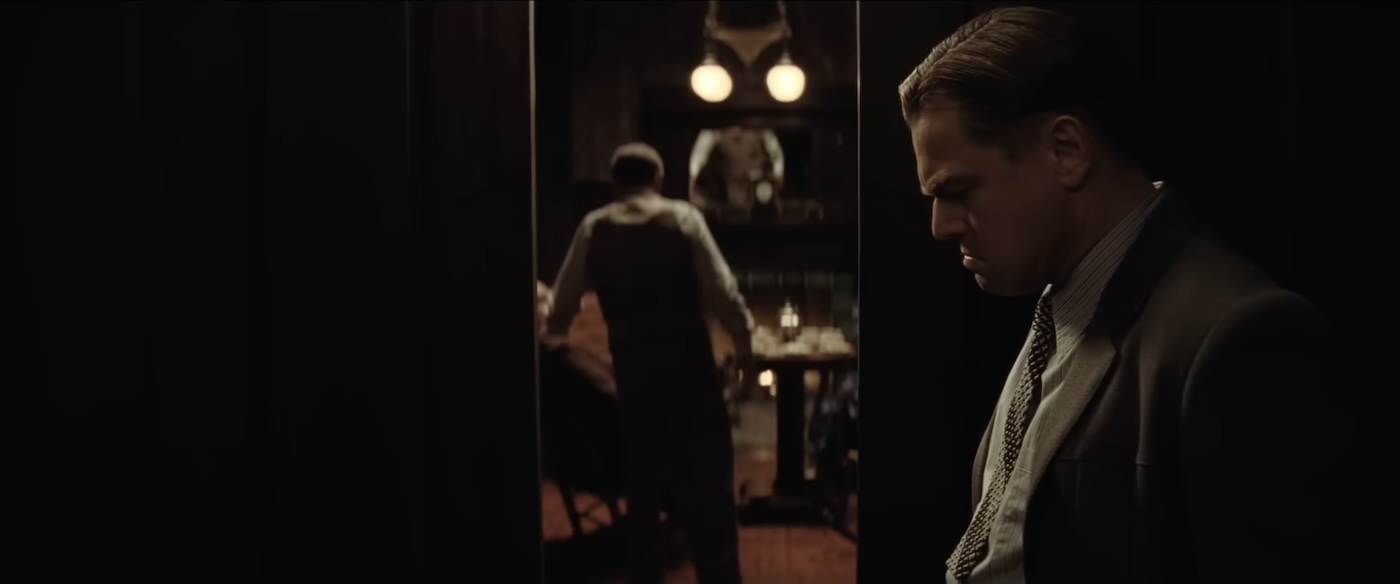
During the first two hours, I was content to brush off DiCaprio’s familiar intensity, in part because it was refreshing to see him cast off any sex-symbol status and create such an absolutely wretched protagonist. Ernest is so dumb, so gullible, so pathetic; his conscience is just a feeble spark buried under a heap of ashes, one that we hope will suddenly flare into action. But in the third hour, DiCaprio's familiar capital “A” Acting — which always has a hint of desperation about it, as if he's trying to live up to “the promise” that critics hyped up during those impressive childhood performances — takes over. And he goes Full-Revenant, contorting his face in such paroxysms that he looks he's fighting a CGI bear to be animated in later. Unlike any other actor in the movie, DiCaprio seems to be running on a script designed to earn an Oscar nomination. It’s like there are tiny coaches running around inside his head shouting Act! Act! Act!
As a result, I have trouble believing that Molly, who seems so wise, so careful, so dignified, would fall so easily for this stammering dope. (That makes this the second American History Epic, after Gangs of New York, for which Scorsese has set DiCaprio as a romantic lead, and I end up constantly thinking about the actor's striving instead of believing the character he's playing.)
There's so much wonderfully nuanced acting going on all around DiCaprio that he almost seems nervous about it. By contrast, performances by De Niro and Gladstone and Plemons and — the most pleasant surprise here — Jason Isbell (!!) seem effortlessly convincing and magnetic.

By contrast, what a relief it is to see De Niro invested again, being his actual age instead of having to act against de-aging tricks like he did in The Irishman. As William Hale, De Niro makes this “Bill” every bit as malevolent as Daniel Day-Lewis’s “Bill the Butcher” in Gangs of New York. But unlike that hyperviolent monster, Hale never has to fire a bullet or throw a knife to become the film's fearsome anti-soul, a black hole of lies and schemes and greed. On a couple of occasions, De Niro jump-scares us with that old Max “Cape Fear” Cady smile, and I was just so glad to see that he's still capable of committing fully to a complicated role.
But then again, just as I have trouble believing in Molly’s love for Ernest, it wasn’t that long ago that I wouldn't have found the community’s trust in the obviously duplicitous Hale too implausible. The charade of civility and religiosity that Hale puts on to gain control over the community seems like a con to me from the start. But now I understand it — it’s not that Hale is fooling his fellow Americans. It’s that the white “Christian” community developing around him would rather turn a blind eye to his moral failings, and enable a monster of "their own kind," than have to share the world with cultures they see as inherently inferior. The Devil doesn’t need to don a disguise; he just needs to promise insecure “Christians” that he’ll give them cultural supremacy, and they will hand him a badge, a Senate seat — even the White House. All they ask is that he sweep aside the neighbors they see as "incompetent" and "savage."
This is happening right now, in real time, even this week, as a man who cloaks himself in the lies and distortions of Christian nationalism seizes the role of Speaker of the House. The tactics of the villains spotlighted here by Scorsese are being practiced in broad daylight by today's GOP. There's a direct line from Bill Hale to Jordan Belfort to "President" Trump. And Scorsese isn’t shy about highlighting that, giving Hale scenes in which he boasts about his “close friendships” with the very people he seeks to erase.

Given my experience with the evangelicals who condemn The Wolf of Wall Street but vote for DeSantis and Trump, I don't expect that Killers of the Flower Moon is going to do anything to awaken "Christian" America's collective conscience. They'll call the depiction of Hale an "attack" on Christianity, just as they said of Paul Dano's mad evangelist in There Will Be Blood (perhaps the big screen’s closest equivalent to a Flannery O’Connor monster that we’ve seen since John Huston’s Wise Blood). They’ll make a fuss about this in order to drown out the implication that their own churchgoing communities might be complicit in American genocide.
Meanwhile, Gladstone's Molly becomes the film's suffering Christ: at times a Mona Lisa, wisdom shining in a penetrating gaze and a tight-lipped silence, and at other times a Joan of Arc, slowly burning before our eyes at the stake of white supremacy and flagrant greed. (If it had been up to me, I’d have given Gladstone top billing. DiCaprio doesn’t need it. And it feels inappropriate to even suggest that heart of the movie beats for Ernest and not for Molly.)
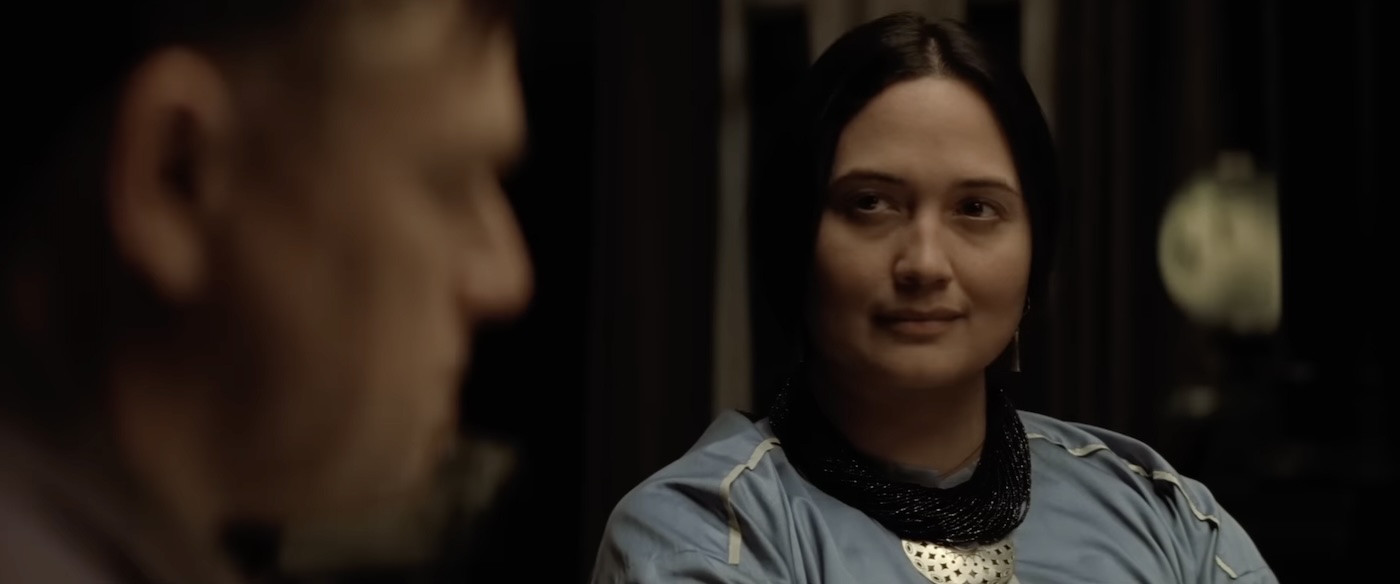
The camera may be enamored of DiCaprio and De Niro, but the magnificent score by Robbie Robertson is a direct line to Molly’s heart, pulsing with sounds rooted in Native tradition. In this grand finale to a relationship that began with 1977’s The Last Waltz, Scorsese and Robertson give the film one of its most distinctive flourishes. And it serves as a profound conclusion to a series of Robbie Robertson records that have celebrated Native American traditions — most significantly 1994’s haunting Music for the Native Americans. He provides us with a voice for Molly’s lament in more than words can say.
In her, we glimpse a genuine faith. Scorsese goes so far as to show us avatars of the spirits she believes in, appearing not as delusions for a traumatized victim but as an elder steps into the afterlife. With this, Scorsese boldly affirms that Molly is more intimate with a Holy Spirit than of her “Christian” neighbors on the scene. And in the film’s closing shot, we get a sense that the spirits who anchor her, both within time and beyond it, represent a higher power that will bring about an inescapable reckoning for all of the sins so blasphemously committed under the banner of "Christian America."
A bittersweet conclusion and a nagging question
How do I express the second of my lingering frustrations with the film without ruining the surprises and challenges of the film’s final fifteen minutes?
I’ll do my best.
Suffice it to say that Scorsese, as “earnest” as he is here about exposing the truth about America’s genocidal crimes against the First Peoples, makes a sudden stylistic turn near the end that makes it almost inevitable that our post-movie conversations will be as much about him as they are about the sufferings of the Osage people or about the ways in which white Americans’ insidious and ongoing efforts to eliminate Others continue today. And that involves a fleeting cameo appearance.
I want to come away from Killers of the Flower Moon talking about and thinking about and grieving for the Osage and all of the other tribal peoples who were slaughtered by myriad strategies, all obscene, all satanic. And I do. But who did I spend the first hour after the movie thinking about and talking about? And who do I see professional film critics talking about most in their reviews? Scorsese.
In Alissa Wilkinson aforementioned piece at Vox.com, she highlights how this movie works continues a trend evident in Scorsese’s last few movies to reveal something about the filmmaker’s own soul-searching. Near the end of the piece, she writes,
Showing up at the end of Killers of the Flower Moon to specifically note how the story of the murders and of Mollie’s family was largely ignored is a tacit acknowledgment that [Scorsese] knows this isn’t a perfectly constructed story, either. Here he is, a man whose success comes at least in small part from proximity to the kind of men who murdered, asking for forbearance. For forgiveness, in a sense. An admission that these real events are not really fodder for an award-winning movie with a red-carpet Cannes premiere. None of it ever really has been.
She’s right, of course. (Wilkinson is one of the wisest writers in film criticism these days, and I’m so grateful that she’s publishing on such a prominent platform. I hope we get to see many more years of her work there.) What she’s highlighting needs our attention. Any close analysis of a work of art is bound to give some attention to what we know of the artist.
At the same time, it concerns me that so much of what I’m seeing and hearing in the wake of this movie’s arrival is preoccupied with talk about Scorsese himself.
The life within a work of art is so much greater than anything the artist might intend or even begin to understand. In every class I teach about creative writing and literary analysis, I fight a losing battle with students over the idea that the “real meanings” of any works of art are something the artists keep like secrets, and that they are the only ones who can truly answer our questions. It’s just not true. An artist might have all kinds of thoughts, intentions, and convictions that lead them to put marks on the page. But once the marks are there, the marks have lives of their own, bringing with them worlds of association and history that the artists weren’t thinking about. And when audiences examine those works, they bring their own ideas, fears, and questions to the encounters, which means they will see make new connections and see new possibilities. In my countless conversations with artists, I have come to love the frequent experience of seeing an artist discover that their art means something they’ve never thought about before.
Thus, while I’m interested in talking about a film’s director in the broader conversation about the film, it’s the art itself and the work’s energy matter to me so much more than the artist. As Annie Dillard writes in Holy the Firm,
There is no such thing as an artist: there is only the world, lit or unlit as the light allows. When the candle is burning, who looks at the wick? When the candle is out, who needs it? But the world without light is wasteland and chaos, and a life without sacrifice is abomination.

Yes, Scorsese is making sacrifices here at the end of his career — sacrifices that may be a form of atonement for earlier works that devoted more awestruck attention to swaggering crooks than to those who have suffered for their crimes. But how much energy shall we expend on admiring his act of conscience when we might instead devote meaningful time and effort in the greater matter at hand: the neglect of those who have suffered immeasurable loss in the violence enabled and even enacted by Americans?
Most of the post-movie conversations I’ve experienced about Killers of the Flower Moon have been about Scorsese, his bravery, his character, his bold choices in the final minutes. Very little of the discussion has focused on the sufferings of First Peoples—which I want to believe is the true focus of the film—or on the ways in which Sheriff Bill Hale, his greed, and his violence against brown- and black-skinned Americans is perpetuated today by Christian nationalists and by Republicans who are seeking to censor true chapters of American history like these.
Sure, when it comes to what we talk about when we talk about Killers of the Flower Moon, much of the responsibility lies with the audience. Maybe it’s just easier to talk about the celebrities than it is to talk about the depth of our complicity in crimes against humanity. But the fact remains that my attention—and I suspect the attention of the audience—suddenly shifts during those final minutes in a way that turns our attention to Scorsese’s conscience rather than the dead for whom we’re (hopefully) grieving. It’s a conundrum I’m struggling with. If I write a novel, I don’t want do anything in the storytelling that will make articles published about the book focus on me, my personal history, or the health of my conscience. I want people to be shaken by the questions and characters that shook me as I wrote the story.

Don’t get me wrong: This isn’t a last-minute dismissal of Killers of the Flower Moon. It’s a great film, and one of the most important events this year in American pop culture. I’m just saying that I wish I had been able to remain enchanted by Scorsese’s magnificent storytelling, and moved by Gladstone and the rest of the cast who were so generous in their ensemble performances. I wish I had been less distracted by the itchy feeling that, as the credits finished rolling, Scorsese might have, even with the best of intentions, ended up making things too much about himself.
Regardless of my aggravations, which I express here in the hopes that they might at least season the larger cultural conversation we’re having about the film, I believe that this movie’s strengths—its urgent and excruciating truth-telling, its often extraordinary artistry, its profoundly affecting score, and the burden of responsibility it reveals to us in our suspension of disbelief—are what matters most. These are the reasons I am so grateful that the movie exists. If we do not join Scorsese in this public acknowledgement of these crimes, taking responsibility for our complicity, and engaging in meaningful and substantial repentance, we're bound to see history repeat itself. Or worse.
And I don’t want those flies settling on my head.
Three Colors: Blue at 30
An early draft of this review was originally published on September 14, 2023,
at Give Me Some Light on Substack, months before it appeared here.
Subscribe, and you'll read many of these reviews while the films are still breaking news!
I first saw Three Colors: Blue in its original theatrical release way back in 1993.
I was impressed by Krzysztof Kieślowski’s follow-up to the magnificent The Double Life of Veronique. In fact, I was moved.
I had no idea that, thirty years later, it would be one of two films that I would name when asked “What’s your favorite film of all time?”
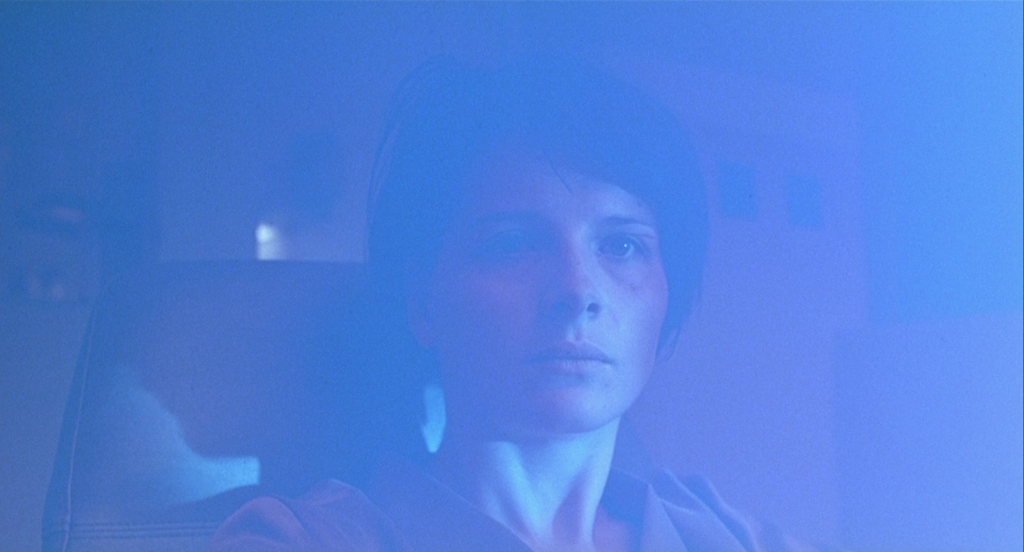
Art takes time. Our relationships with works of art grows and changes over time. And Three Colors: Blue engages questions about art, faith, love, and the meaning of life in ways that no other film I’ve ever seen does.
I’ve talked about my love for this film for years, and written about it on numerous occasions — for my own website (LookingCloser.org), for Image, and elsewhere.
And yet, when I was invited to write a substantial study of a film that has demonstrated great “spiritual significance,” I jumped at the chance to write about Blue again. This time, I couldn’t stop writing. I ended up with an essay one adjective shy of 10,000 words.
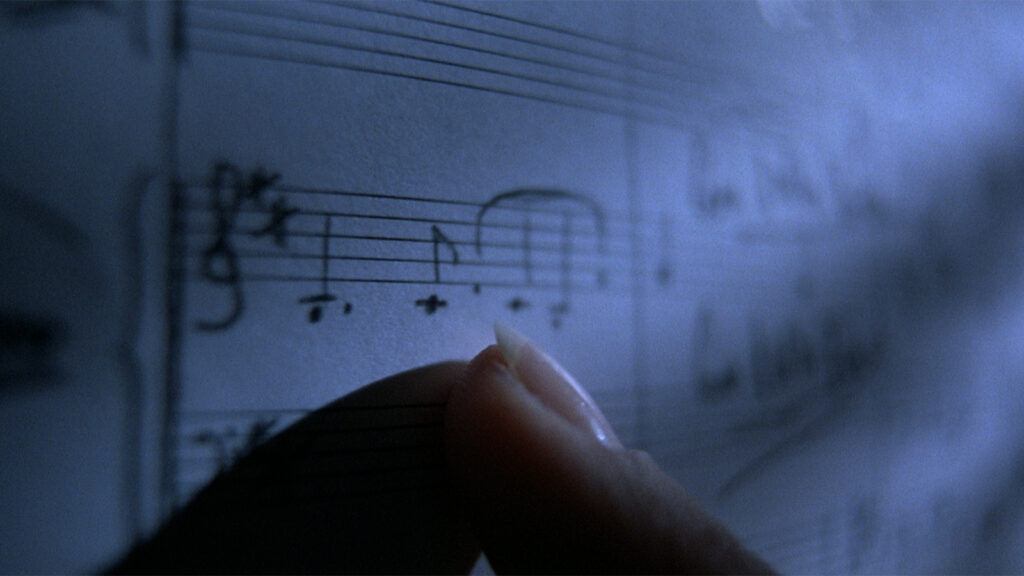
It’s called “To Love and Be Loved in Return: 30 Years of Discovering Kieślowski’s Blue.”
It is now published in a volume that includes work by some of my favorite writers on the intersection of faith and film — including Steven D. Greydanus and Evan Cogswell, to name only two. And the book was edited by Kenneth Morefield. These three and other contributors to the book have long been a part of an online community of cinephiles who are also people of faith. The discussion board ArtsandFaith.com eventually developed 20 years of archived conversations, open to the public, focused on countless films, albums, books, and other varieties of art. Alas, that extraordinary body of work, which had been hosted by the literary arts journal Image, was closed down and erased a few years ago. We lost a documented history of how the dialogue on faith and art had grown and changed over decades.
But this book represents an important historical artifact. The Arts & Faith Top 100 was a list of “the most spiritually significant films” ever made, and it was voted on and re-voted on, revised every few years, so that we had a variety of published lists. We also voted on and published variations on the list, such as “The Top 25 Divine Comedies” and “The Top 25 Films on Mercy” — comedies that directly address spiritual questions and concepts.
Now, Cambridge Scholars Publishing has published Film as an Expression of Spirituality: The Arts and Faith Top 100 Films.
It’s a book that includes a variety of essays on some of the films included in that list. (The working title of the project was The Soul of Cinema: The Arts and Faith Top 100 Films, but the publisher scratched that title and came up with the final version. I actually prefer the original title.)
Many thanks to editor Kenneth R. Morefield for his long-suffering dedication to the project.
The book includes close examinations of so many profoundly inspiring films, including Dreyer’s Ordet, Scorsese’s Silence, Bergman’s The Seventh Seal, Antonioni’s L’Avventura, Pasolini’s The Gospel According to St. Matthew, Kubrick’s 2001: A Space Odyssey, Joffé’s The Mission, Weir’s Witness, Axel’s Babette’s Feast, Miyazaki’s Spirited Away, Lee’s Do the Right Thing, Burnett’s To Sleep With Anger, Hausner’s Lourde, Schrader’s First Reformed, and more.
The Eight Mountains (2023)
An early draft of this review was originally published on September 14, 2023,
at Give Me Some Light on Substack, months before it appeared here.
Subscribe, and you'll read many of these reviews while the films are still breaking news!
I continue to believe that much of Peter Jackson’s success with his film adaptation of The Lord of the Rings had to do with how enthralled audiences were with seeing the glory of New Zealand — those mountains, those panoramic wildernesses — projected on such a grand canvas. The more our attention is absorbed by screens, the more we tend to be creatures of indoor-habit, and the more we long for what we’re missing: the created world in its sensual, ancient, awe-inspiring glory.
That is, no doubt, why I added The Eight Mountains to my must-see list the first time I saw the trailer. And that will remain, most likely, the thing I cherish most about the experience.
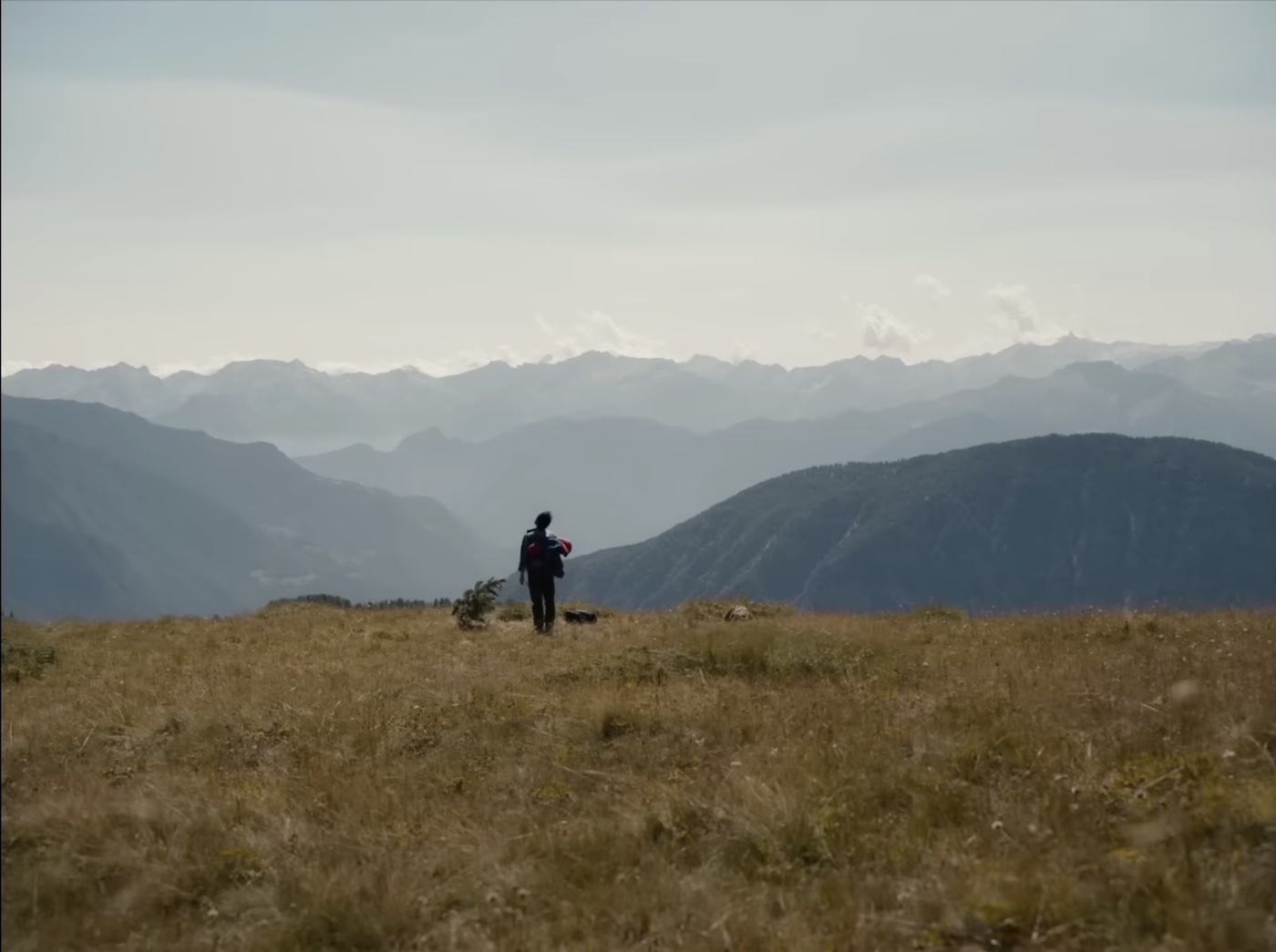
Somehow I’ve missed both of the previous films by director Felix van Groeningen — Beautiful Boy, a reportedly harrowing drug-addiction drama about a father (Steve Carrell) and son (Timothée Chalamet), and The Broken Circle Breakdown, the story of a rocky romance between Belgian bluegrass musicians. The latter was co-directed by Charlotte Vandermeersch, and the two have collaborated again here on this adaptation of a novel by Paolo Cognetti: an epic story of a friendship that began in childhood and remains strained but strangely unbreakable over their courses of their troubled lives.
The Eight Mountains is several things at once:
- a celebration of the Italian Alps, ruggedly glorious landscapes that deserve long, slow, panoramic attention;
- a study of how men tend to live lives either inspired by their fathers, wounded by their fathers, intimidated by them, or longing to fill the voids that they left; and
- a philosophical meditation on two ways to live life—by devoting oneself to a singular place and passion, or by following questions far and wide.
As it begins, eleven-year-old Pietro, the son of a Turin-based engineer, spends a summer with his mother in a rental in Grana in the Italian Alps, and there he meets Bruno, the one remaining child in a slowly disappearing mountain village. While the city boy is enchanted by the village boy’s raw, rough, aggressive demeanor, and while he delights in how happy this lonely stranger seems to be to have a friend, their relationship is quickly complicated: Pietro’s mother wants to help the boy socialize and find opportunities away from his grim situation at home. And Pietro’s distant, difficult, hyper-masculine father embraces Bruno as the kind of son that he wishes Pietro would be.
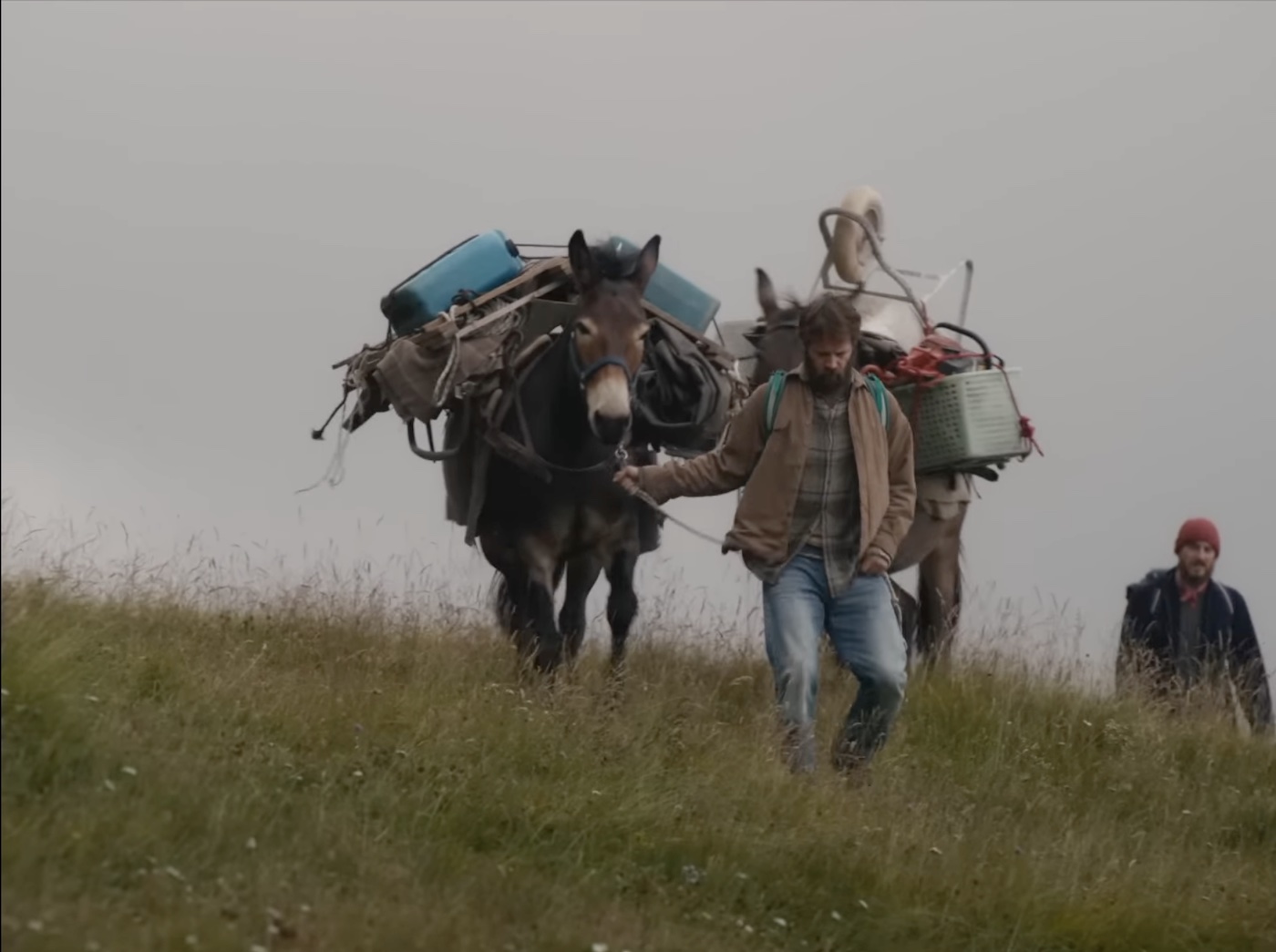
How can Pietro find peace as Bruno’s soul mate if his friend only worsens his sense of insecurity and insufficiency around his own father?
One of the film’s strengths is how convincingly it tracks both Pietro and Bruno over many years. They are played in childhood, late teens, and then adulthood by three sets of actors — child-actors Lupo Barbiero and Cristiano Sassella, then Andrea Palma and Francesco Palombelli, and finally Luca Marinelli and Alessandro Borghi. And all of these actors are excellent choices. We believe the time-shifts without trouble, a feat rarely achieved in films that cover such large spans of time. (I still feel like I’m shut of out of the near-universal enthusiasm for the Oscar-winning Moonlight because the differences between the actors playing the central character were so jarringly distracting.)
I was drawn in to The Eight Mountains early, just as I was with a thematically similar Belgian feature — Lukas Dhont’s Close — at the beginning of this year. Cinema is a world in which artists and audiences alike seem perpetually uncomfortable with the subject of male friendship. Don’t get me wrong: We need movies like Brokeback Mountain. But it’s as though the medium has become so hyper-sexualized that we don’t know how to focus on anything but eroticism when two bodies share screen space together for a prolonged period. I still get headaches recalling how so many moviegoer conversations about The Lord of the Rings devolved into arguments about whether Frodo and Sam were gay, or whether it wouldn’t have been better to re-imagine Samwise as female so we could scratch our insatiable itch for romantic subplots.
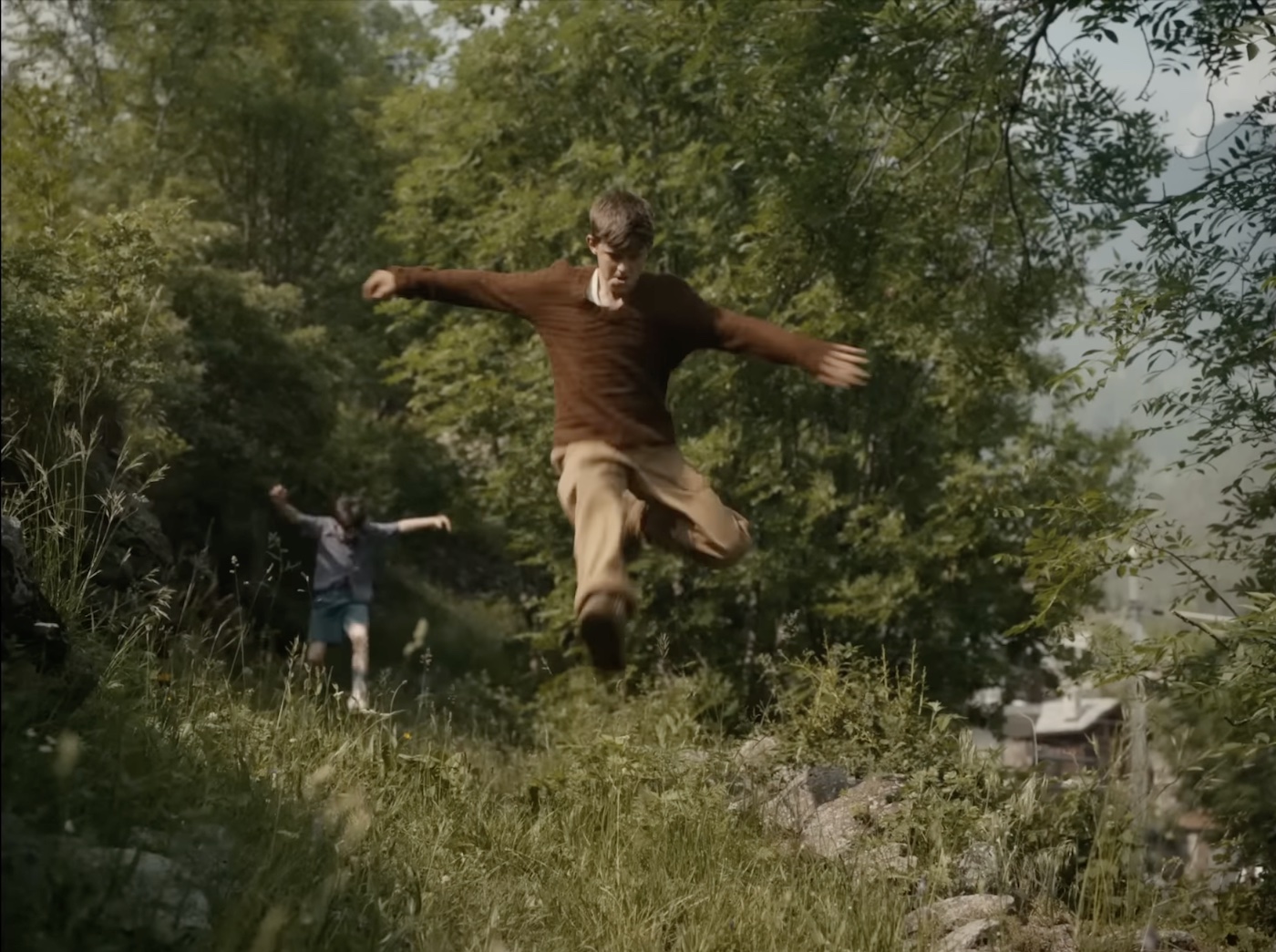
In her review, New York Times film critic Manohla Dargis notes, “The spiritual dimension of Pietro and Bruno’s bond has its appeal, and one of the movie’s pleasures is that it takes male friendship seriously.” But she cannot help but give the next several lines to wondering about the “expressly erotic dimension [of] the men’s love for each other,” and explicitly speculating, “Perhaps, during one of the long summer evenings they spend together after Pietro returns to the area, one quietly reaches for the other under the cover of night.” Is this tangent really necessary? Did I miss something — or is there no suggestion whatsoever, however subtle, that their friendship takes such a turn?
At the mid-century mark, I can look back at dozens of substantial friendships that have lasted decades with men and women alike — and these stories include all kinds of outdoor adventures and camping trips — that have been healthy and meaningful while remaining responsibly and effortlessly platonic. Storytellers, particularly in television and movies, seem to lack imagination, discipline, and curiosity on this subject, and I’m sure that has a significant ripple effect on real-world behaviors. Maybe sexual harassment and assault would be rarer if we grew up attending to stories about the possibility of, and the rich rewards of, intimate and yet platonic friendships… I don’t know. Is my experience so rare? What a miserable life it must be for people who cannot enjoy friendships without being tormented by the question of “Will we or won’t we?”
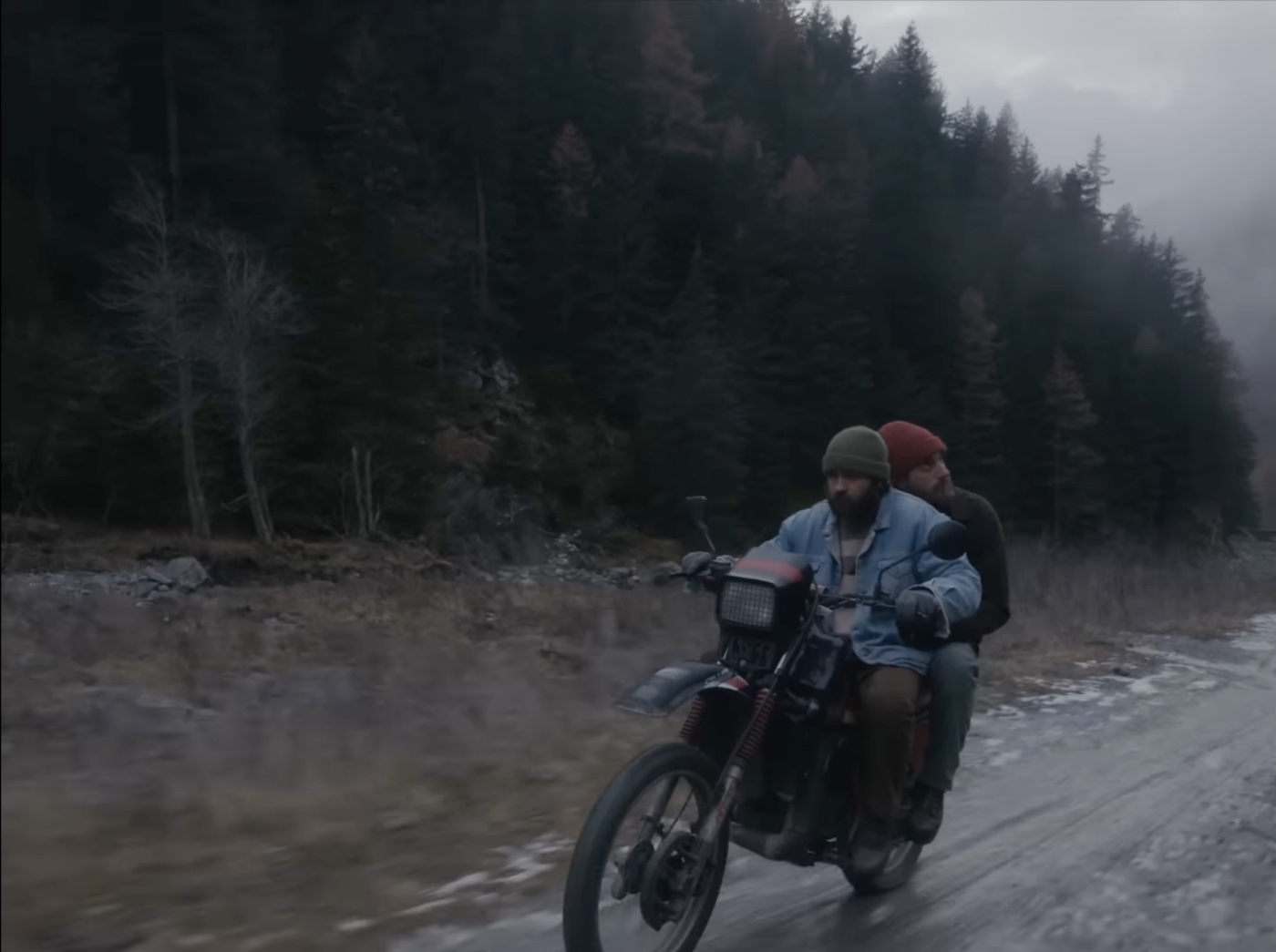
Anyway, I would have been disappointed if van Groeningen and Vandermeersch had given in to such a familiar and predictable storyline and lost the film’s distinctive focus on the ways in which fathers — either present or absent, loving or difficult — shape their sons and influence how those boys will relate to other boys. That is, for me, the most interesting thread of the film, so much so that I sometimes struggled to stick with the movie as the fathers faded into the spectacular backgrounds.
And those landscapes really are awe-inspiring. I’m always down for some stunning panoramic cinematography of mountains, forests, rocks, streams, and glaciers, but there is an out-of-time quality to these that made them almost frightening to gaze upon. (This is true even though I missed the film’s brief theatrical release and ended up watching it at home on a computer monitor.) Note: I’m trying hard not to talk about the film’s reverent attention to “nature,” since one of the film’s characters scoffs at those who use that term.
Nevertheless, the strongest impression that lingers with me after the film’s 2-hour and 27-minute running time is one of frustration. And there are several causes of that.
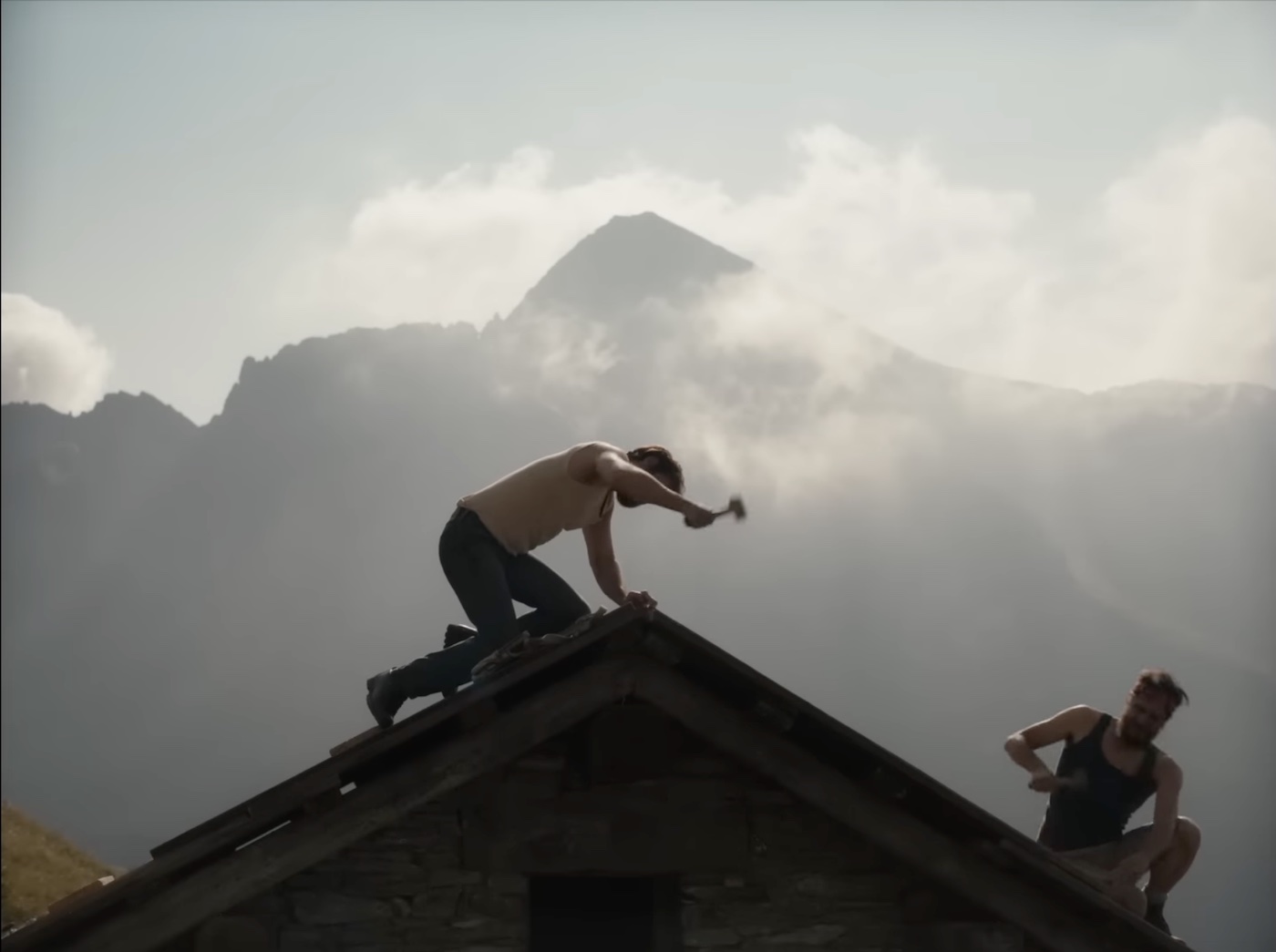
One of them is the film’s score by Swedish singer-songwriter Daniel Norgren. The music is, at times, subtle and unsettling, and at its best when it’s nothing more than a primal pulse that seems to emanate from the mountains themselves. But too often Norgren weaves in songs from his own pre-existing work, which seem somewhat intrusive and overbearing, spelling sentiments out in the lyrics that seem to narrow the film’s focus instead of enhancing it. What’s more, they kept distracting me with their English-language lyrics that seemed incongruous with what was happening in the foreground, and with how consistently they reminded me of other bands: Fleet Foxes, My Morning Jacket, The Lumineers… you know the type. It felt like music I would hear playing in REI, Eddie Bauer, or other stores that strive to make men comfortable while they shop for hiking boots, beard trimmers, or trail mix.
Sometimes, voice-over narration is necessary for storytelling that sprawls as much as this does, but I found the script for this uninspired and a bit too quick to sum up insights for us when we might be drawing our own conclusions.

Another problem is how the film’s more mystical leanings surge in the final minutes in a way that seems to romanticize and glorify choices that seem, to me anyway, to be evidence of mental illness or spiritual despair. The Eight Mountains is in rich, rewarding territory when it is digging into questions about the precarious balance between being a part of “the wild” and part of civilization, questions that made Kelly Reichardt’s Old Joy and Sean Penn’s Into the Wild compelling. It seems at first to be earnestly interested in how a certain brawny ideal of masculinity can become dangerously seductive. But in the end, I just don’t think the film finds much fresh or interesting to offer on that subject. And it gives in, finally, to the alluring mystique of Bruno, granting him a kind of mythic status as an independent mountain man-god.
Finally, as beautiful as all of those jagged horizons can be, there’s a difference between photographing the wonders of “nature” (okay, I said it) and making something of it. Ruben Impens’ photography remains disappointingly practical. What we see is either advancing the story or providing lush scenic interludes, but only the formidable glacier takes on any poetic significance.
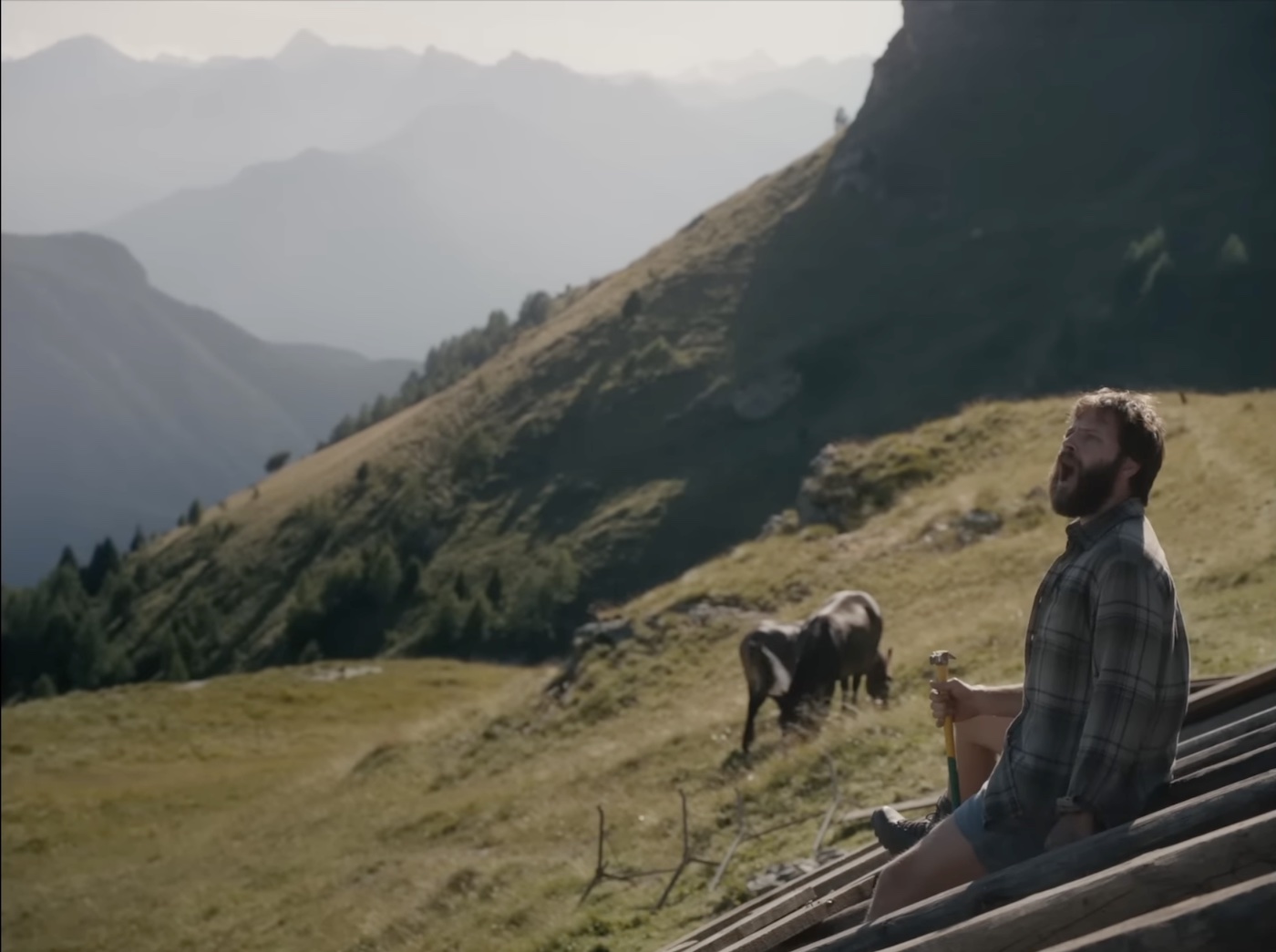
I don’t want to discourage audiences from seeking out The Eight Mountains. There’s enough remarkable about it that it could inspire some meaningful conversations. I’ll be seeing these mountainscapes when I close my eyes for a long time to come. And, again, I’m grateful to have another substantial entry in that neglected genre of films about male friendships. But I think this film would serve us best if we considered it in a conversation that also includes other films with overlapping themes — like A River Runs Through It, for example, which explores some similar territory and, in my opinion, does so with greater insight.
Bottoms (2023)
An early draft of this review was originally published on September 1, 2023,
at Give Me Some Light on Substack, months before it appeared here.
Subscribe, and you'll read many of these reviews while the films are still breaking news!
Bottoms is a movie that might reopen wounds for fans of the Seattle Seahawks.
The dynamic new comedy team of Emma Seligman (director and writer of Bottoms) and Rachel Sennott (co-writer and star) — whose first collaborative feature Shiva Baby was one of 2021’s most celebrated indie films — knew what they were doing when they drafted former Seahawk running back Marshawn Lynch to their team for his first big-screen role. In these 92 minutes, they go to him over and over again, showing better judgment than the Seahawks did with the Super Bowl on the line. And he delivers.
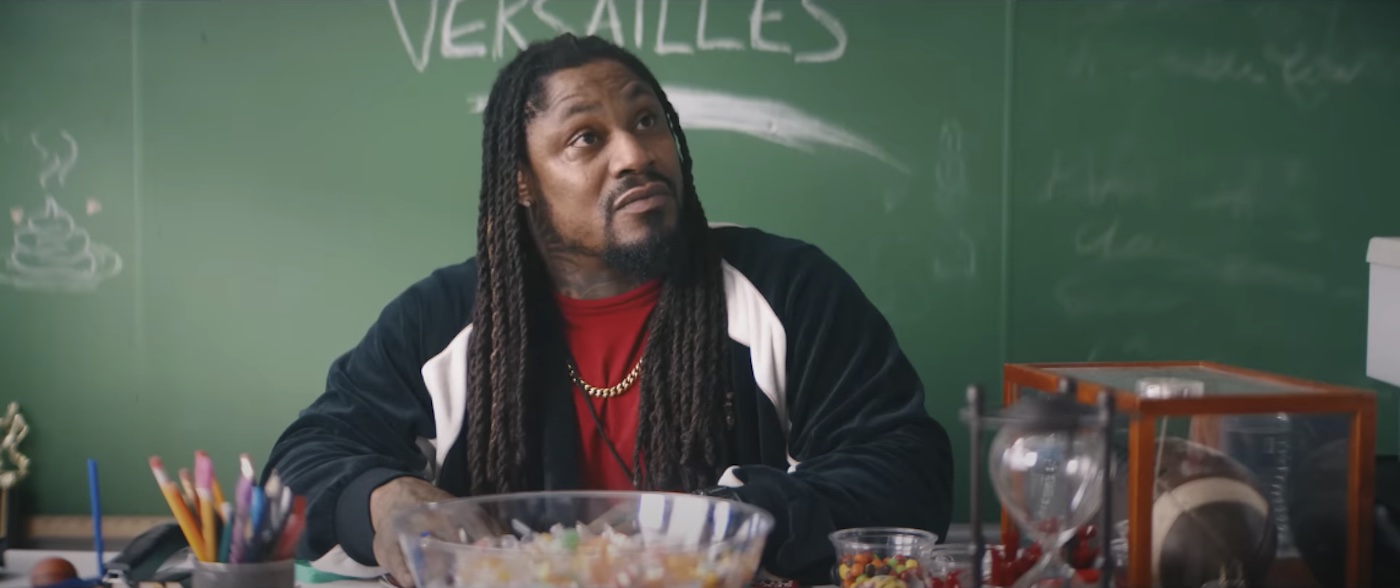
And that’s just one of the best reasons to see Bottoms.
Lynch plays Mr. G, a high school social studies teacher who shows no qualifications whatsoever. His class unit on feminism, for example, suggests he hasn’t even bothered to Google it, and he’s likely to turn his dubious "history lesson" on the subject into a flat dismissal if the free-thinking young women of his class step on his toes, without any perception of the irony.
But this isn’t a movie about Mr. G.
It’s about two of those free-thinking young women: PJ (Sennott, more ascerbic and confident with each performance) and Josie (the ubiquitous and delightful Ayo Edibiri of Hulu's The Bear). Branded as the “ugly and untalented gays” of Rockbridge High, PJ and Josie are cooking up a scheme to lose their virginity before graduation.
Their plan is simple: Exploit the fears and vulnerabilities of their peers. They’ll host an all-female fight club after school to train girls in self-defense before the annual football-game clash with the notoriously predatory jocks of their rival school, Huntington High. Apparently, these Rockbridge/Huntington clashes on the football field always inspire further violence off of the field: assault, rape, even murder. But PJ and Josie aren’t actually qualified to train anybody in anything. So, to fake their credentials, they spread a fake story about having done hard time in juvenile detention.

Will this wild story spark their dreamgirls’ curiosity and eventually make sexual conquests possible? Will Mr. G give them the support they need to get the club up and running? Will they have the guts to throw actual punches? Or will they be exposed as the horny and desperate liars that they are?
Okay, I admit: The Teen Sex Comedy is not a genre I give much attention to.
And there are a lot of legendary entries in that genre I’ve never seen, including Wet Hot American Summer and Superbad—both films that are mentioned in almost every review of Bottoms. So, this is not subject matter anybody is likely to seek out my perspective on. Why bother writing about it then? I’m writing because that’s the best way I know to process what I experience. I bought a ticket to Bottoms because some of my students were raving about it. And what do you know—the movie gave me a lot to think about.
Before I go into greater detail about why I laughed all the way through this marathon of bold and dirty jokes, I need to preface my praise with a remembrance of Michael Lehmann’s unconventionally crass high-school satire Heathers. The two films have a lot in common, and in the 35 years I’ve had to suspiciously interrogate myself about my affection for Heathers, I’ve realized some things that helped me recognize right away why this brazenly R-rated comedy was making me cringe, laugh, applaud, and struggle.
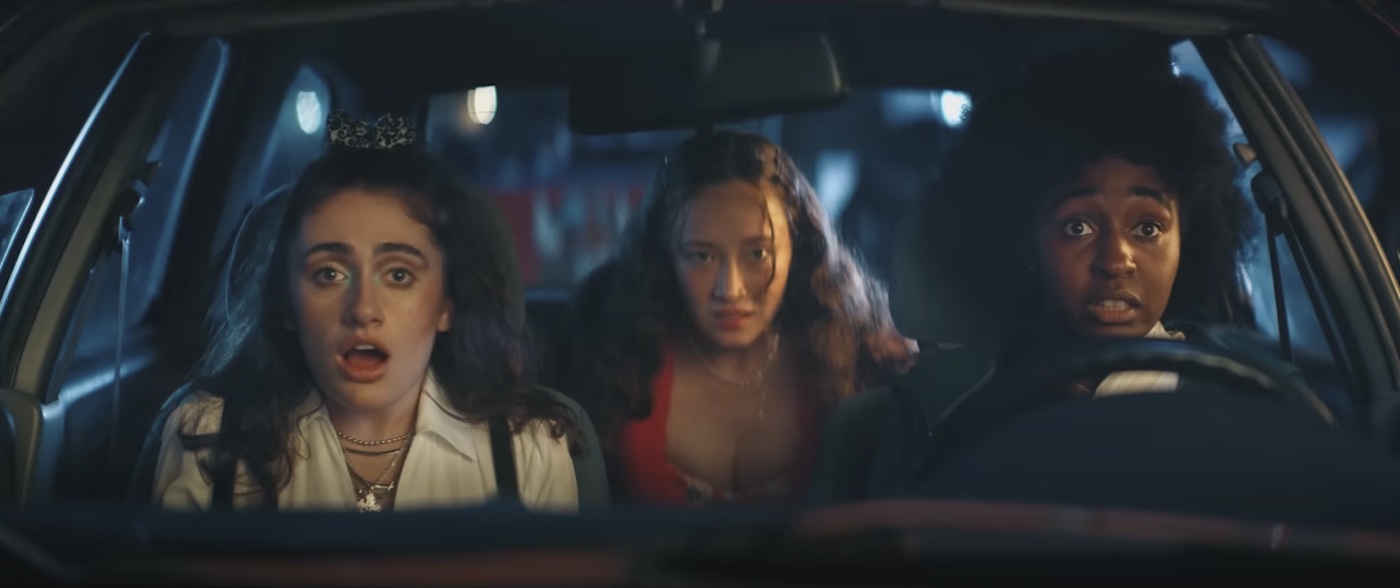
In 1988, Heathers shocked rom-com lovers with very R-rated dialogue, explicit sexuality, and violence so over the top that it made John Hughes high-school comedies seem like after-school specials for kids. And its punchlines left some of viewers punch-drunk and offended, while others were punch-drunk and exhilarated.
I was among the exhilarated.
Heathers, like two of its spiritual predecessors Harold and Maude and Better Off Dead, is a comedy about social outsiders, peer pressure, the pain of humiliation, and the reasons that so many high schoolers entertain thoughts of suicide. The titular “Heathers” are a vain and cruel clique of popular girls at a high school toxic with typically damaging teen hierarchies. When Veronica, the only non-Heather of the clique, gets kicked out of the group, she falls in with J.D., a mischievous newcomer who refuses to let the jocks push him around. Together, J.D. and Veronica — played by Winona Ryder and Christian Slater in performances that made them cult heroes — fulfilled the fantasies of high school outcasts by rebelling against the tyranny of an elite clique. They launched a wicked plot against the Pretty “Powers That Be,” aiming to kill them off and make their deaths look like just another trend in teen suicide.
So, yeah, it’s dark. But even though I, as a conservative and insecure 18-year-old, felt like I was way outside of my comfort zone when I saw Heathers for the first time… I loved it.
https://youtu.be/KJVKh9KKiug?si=wL5uzVG54gr_qk34
We have a complicated history, Heathers and I.
As most of my readers already know, I grew up in a private religious school system — kindergarten through high school. And, as I hope you know, the realities of any private school are far more complex than their supporters or nay-sayers tend to acknowledge. Was I living in “an evangelical bubble”? Yes. Was that bubble quite toxic with fearmongering about “the world outside"? Not everyone was guilty of that, but yes, absolutely. Was it a training ground for right-wingers in the culture wars? In some classrooms and sub-groups, yes.
But I am also grateful for the experience. Our high school emphasized good sportsmanship, good citizenship, and “loving our neighbors” more than other schools probably did. And the prioritization of Bible studies gave us all an education in the teachings and ministry of Jesus, teachings that stand in stark contrast to the priorities of today's Christian Nationalist movement. Most importantly, I had several great teachers who were intent on helping us discern between the Gospel's grace and the dangerous distortions of the "political church" in America. They counteracted right-wing indoctrination with guidance in wisdom, critical thinking, and genuinely courageous faith.
Nevertheless, we were also a community of kids prone to the same misbehaviors, insecurities, peer-pressures, and abuses as any other teen population. Sports still received far more energetic fanfare than academics, and the most talented male athletes and their girlfriends (usually cheerleaders) were treated by their peers as the de facto Kings and Queens of the school.

Those of us who fell short of elite status felt like — and were often treated as — outsiders. I withdrew from sports in high school in part because I found more fulfillment in creativity than competition, but also because I was increasingly uncomfortable with the increasing intensity of the drive to win, a misleading vision of how faith was connected to victory (an ideal that still infects a lot of sports-focused Christian entertainment), and by the ways in which the Powers That Be overlooked and excused the meanness of both boys and girls as if such behavior “just came with the territory.”
Thus, movies about students who had passions other than sports, students who prioritized education, and students who cared about each other with civility and kindness — these made strong impressions on me and some of my similarly alienated peers.

Heathers scared me with its brash fun-house-mirror distortions of high school life — distortions that truthfully testified to the real-world ugliness that most high-school movies, preoccupied with matching up pretty girls and brawny boys, ignored. The movie was disturbing in its frankness about the cruelty that runs rampant within teen hierarchies. But it was also thrilling in how it dramatized the fantasies of anyone who had imagined pushing back against violence with violence. Heathers made me laugh for how it exposed the emptiness of popularity and the dangers of superficiality. Moreover, it was cathartic to see the outsiders have their day, and to see the elite paying a price for their vanity and their insensitivity to others.
I enjoyed all of it — particularly because it wrapped up by 1) turning the tables against the vengeful rebels themselves, and, 2) showing that such sensational vengefulness is ultimately a self-destructive endeavor. Watching the movie, I could enjoy my violent fantasies and then feel absolved of my sins at the end.

But an unsettling feeling lingered after the credits rolled every time. On some level, I realized that Heathers was reveling in its spirit of righteous anger and vigilante vengefulness, and I didn’t like how easily I was won over into cheering. Veronica's last-minute transformation into a saintly young woman of conscience felt unconvincing. It was almost like the the filmmakers knew they’d been playing a dangerous game, fueling fantasies of vengeance in an audience that might not be wise enough to know the difference between satire and a summons to violence.
There were other reasons, though, that Heathers felt dangerous in a good way.
1. Artful Profanity
Many — perhaps most — in my conservative Christian school community treated R-rated language as Grade-A sin. In Heathers, there was a thrilling sense of liberation in how the movie acknowledged the crassness and cruelty of high school villains, but gave the oppressed characters license to cuss with vigor. Having to live in a world of abuse, their language seemed appropriate as a response to the far-worse offenses they were suffering. After all, words mean things. People can use words inappropriately, but there are no “bad words”: If you use an f-bomb to describe how you are being exploited and abused, isn’t that… precise and truthful language? In Heathers, the profanity felt true to the context and the occasion.
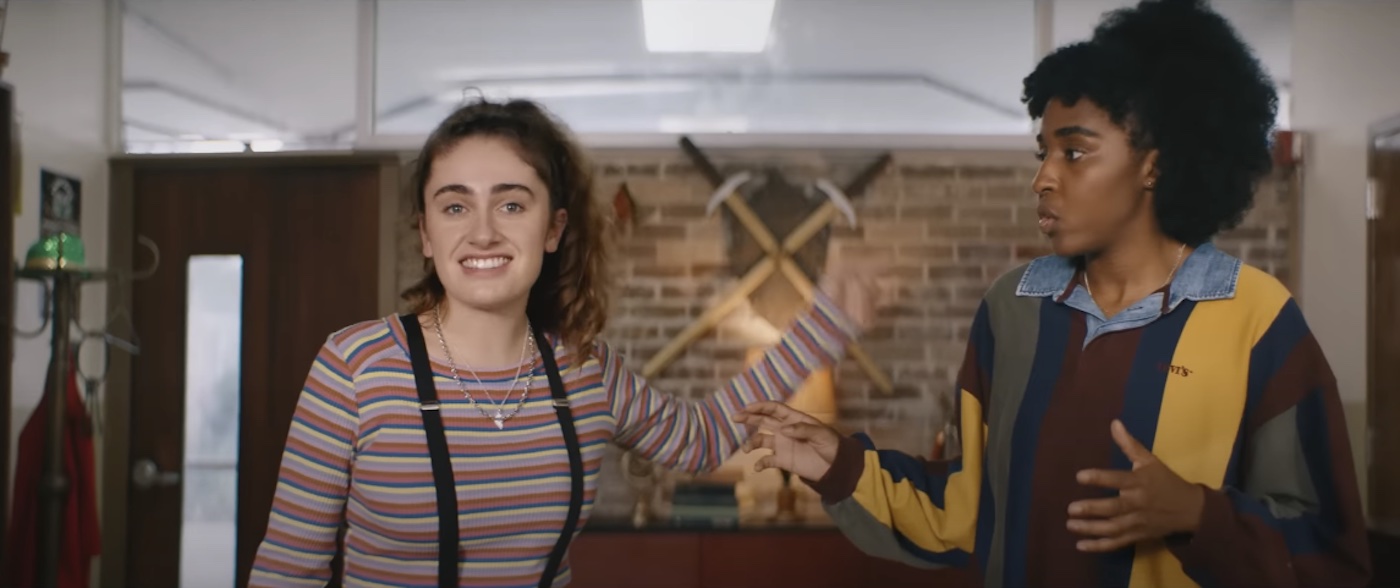
2. Strong Women
Many — if not most — people in my community defined gender roles narrowly and frowned upon (or ignored) exceptions. And they found ways to manipulate Bible verses to back up the New Law they had written to organize their world and push out those who made them uncomfortable. Heathers pushed back on the rigid parameters of conventional gender roles, giving us examples of young women who found the freedom to fight back against abuse and degradation.
3. Non-Binary Thinking
Many — if not most — in my community defined sexuality as a purely binary matter by God’s design, and condemned exceptions as willful disobedience without discussion, overlooking Jesus’ tendency to overturn hierarchies and embrace the exceptions and outsiders. Heathers, more than other teen comedies I can remember, was generous and inclusive in the characters it portrayed as the oppressed. It made room for us to care about gay characters, and acknowledged, if only briefly, the prevalence of prejudice. As I was incredibly naive about sexuality even into college (due to an overwhelming cultural silence on the complexity of the subject), I remember Heathers as being one of the first movies that made me stop and ask some of the important questions that had been suppressed: Did I have any classmates or peers who weren’t straight? Was anyone in my community afraid to be honest about who they were and what they felt? Were any of them feeling judged and condemned? (I would learn later — yes, of course they were. Quite a few of them, in fact.)
4. Frank Acknowledgment of Abusive Behavior
Many — if not most — in my community tolerated, ignored, explained away, or were too naive to acknowledge cases of sexual harassment and misogyny. I would hear testimonies later from trusted friends about things they suffered or witnessed that were ignored or missed by teachers and administrators, or that the Powers That Be brushed off as misunderstandings or as “boys being boys.” Heathers portrayed abuse as abuse, and it felt good to see abusers called out.
Looking back more than 30 years, I can see why Heathers seemed revolutionary to me. It was saying things out loud forcefully about high school, about power, and about sexuality that I hadn’t experienced at the movies before. It was saying things that I didn’t hear expressed enough in my small, cloistered community. It called out forms of injustice I hadn’t really seen clearly before. And, for better or worse, it appeased viewers’ anger about those injustices with spectacular — and, more importantly, satirical — violence. (Brian Dannelly’s 2004 comedy Saved! did this in similar ways, and applied them in the context of a private school that greatly resembled my own.)
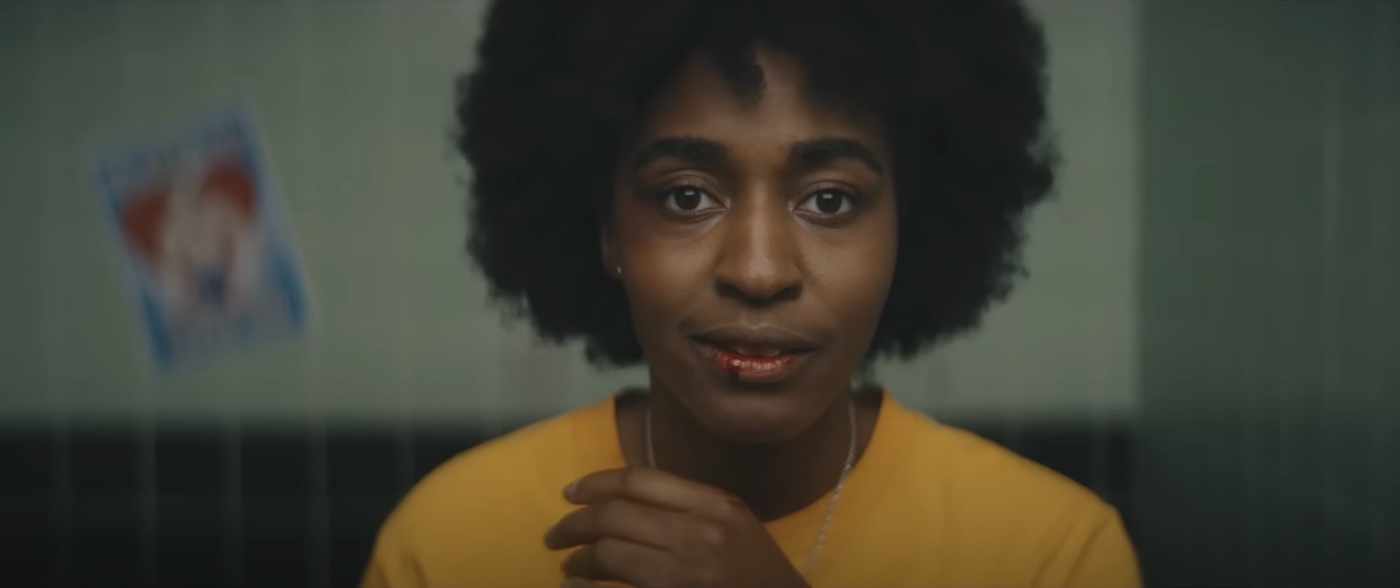
Today, I understand and appreciate Heathers’ angry spirit. I can appreciate how effective satire can, by exaggerating matters that are otherwise minimized, help us start facing and reckoning with the whole truth, even though I also think it’s dangerous to throw fuel on the fires of teen anger.
Heathers can, for some audiences, do more harm than good. It can throw fuel on the fires of cynicism. It can, for viewers who lack discernment, appear to be condoning violence against the elite, the popular, the powers that be. I remain somewhat unsatisfied with how much energy it gives to appeasing our desire for equal and opposite violence against violent oppressors, while it gives feeble attention to the essential qualities of restraint and compassion — to say nothing of that most scandalous of Christian ideals: love of one’s enemies.
And that's why I say that Bottoms is Heathers for 2023.
Seligman's film is going to offend the squeamish; they won’t take well to its R-rated violence and sexually frank dialogue. It’s going to offend those who have no idea about the toxic realities that high schoolers — yes, even Christian high schoolers — deal with on a daily basis; they will call its explicit treatment of sexuality excessive, for starters. And it’s going to be judged in conservative circles as culturally poisonous for how it takes for granted that, yes, a lot of young people don’t fit into their narrow definitions regarding sex and gender.
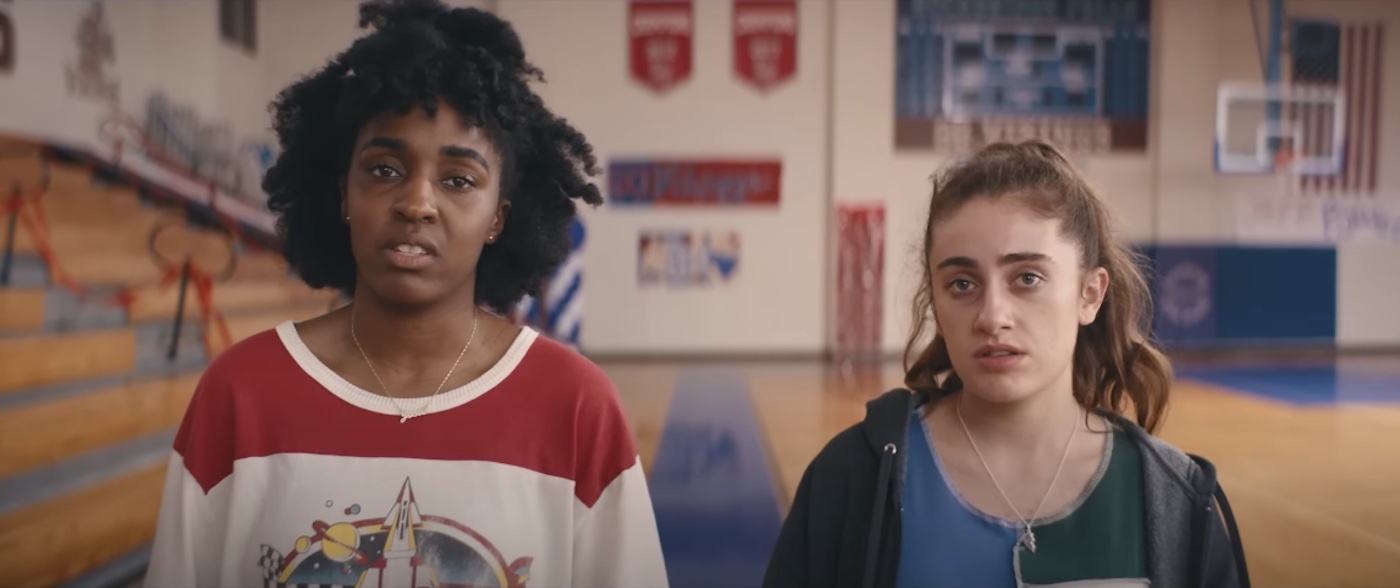
Me? I’m troubled by the fact that its understanding of the relationship between love and sex seems stuck in shallowness and superficiality. It mistakes love for hormones, and seems inclined to hold up romantic love — or, more narrowly, merely sexual satisfaction — as the supreme goal of human existence. If you’re not getting some in this world, your life seems somewhat meaningless. But isn’t this true about most romantic comedies for audiences of any age? That’s hardly a problem unique to Heathers and Bottoms.
Otherwise, I love the characters in Bottoms. I love the way the satire exaggerates things that need to be lampooned so that they can be called out. (In that sense, Bottoms had a whole lot in common with Barbie, another film that clearly sees how young women are conditioned to believe that they only options available to them are limited and degrading.) I also love one of this movie’s more dangerous aspects: how it allows its satire to go tumbling into absolute absurdity, much as Heathers does, so that it ends up as a rom-com with a body count that makes no sense whatsoever.
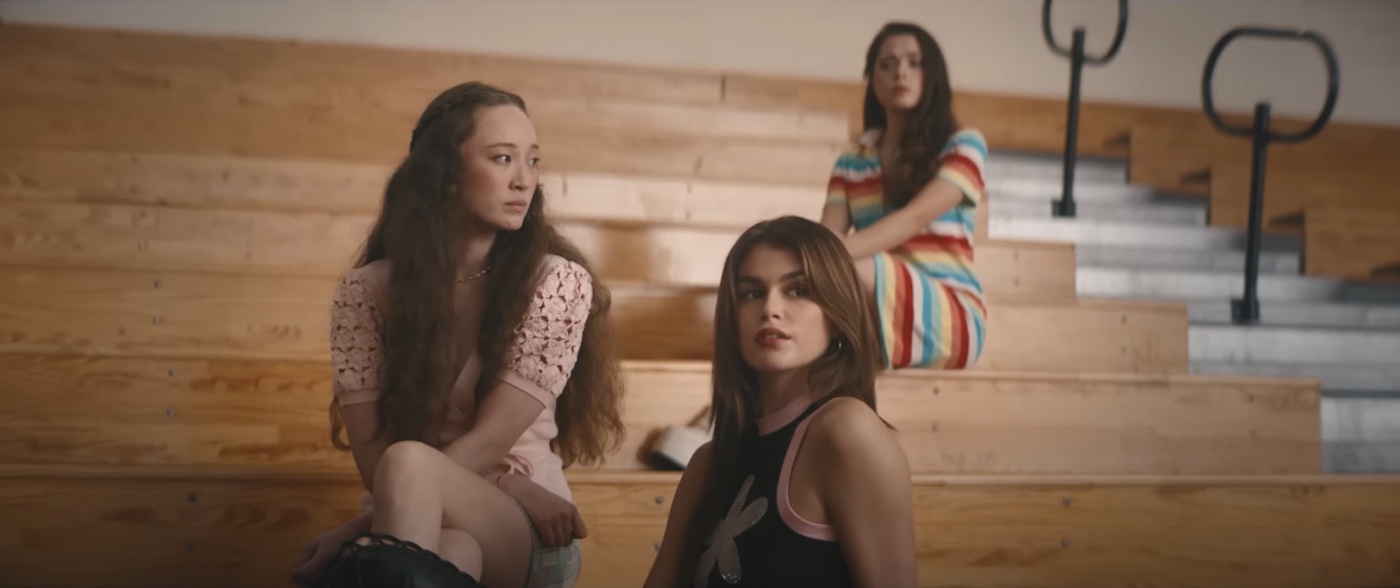
(This particular exaggeration of high school sports is particularly meaningful for me, as it seems like America’s obsession with physically violent sports is amplifying and accelerating our culture’s devolution into violent tribalism. So many who surrendered to the religion of physical dominance in high school sports have become supporters of the MAGA insurrection, favoring a might-makes-right philosophy and fascism over democracy. Bottoms’ big, loud jokes about this will make some viewers uncomfortable because such satire exposes cultural addictions we don’t want to admit. And any effective recourse against such societal cancers would require sweeping changes to our cultural traditions and obsessions — which isn’t likely to happen in our lifetimes.)
So, while I can’t say that Bottoms strikes me as a movie with much wisdom to offer on the subject of love, it does give us a revealing comedy about abuses of power and privilege that are learned behaviors, abuses that are modeled for young people by adults and then practiced until they become destructive traditions and institutions. Like another controversial 2023 feature film, How to Blow Up a Pipeline, it understands the problems very well. And then it pours a lot of passion into depictions of “fighting back” that may not, in the long run, be the better part of valor.
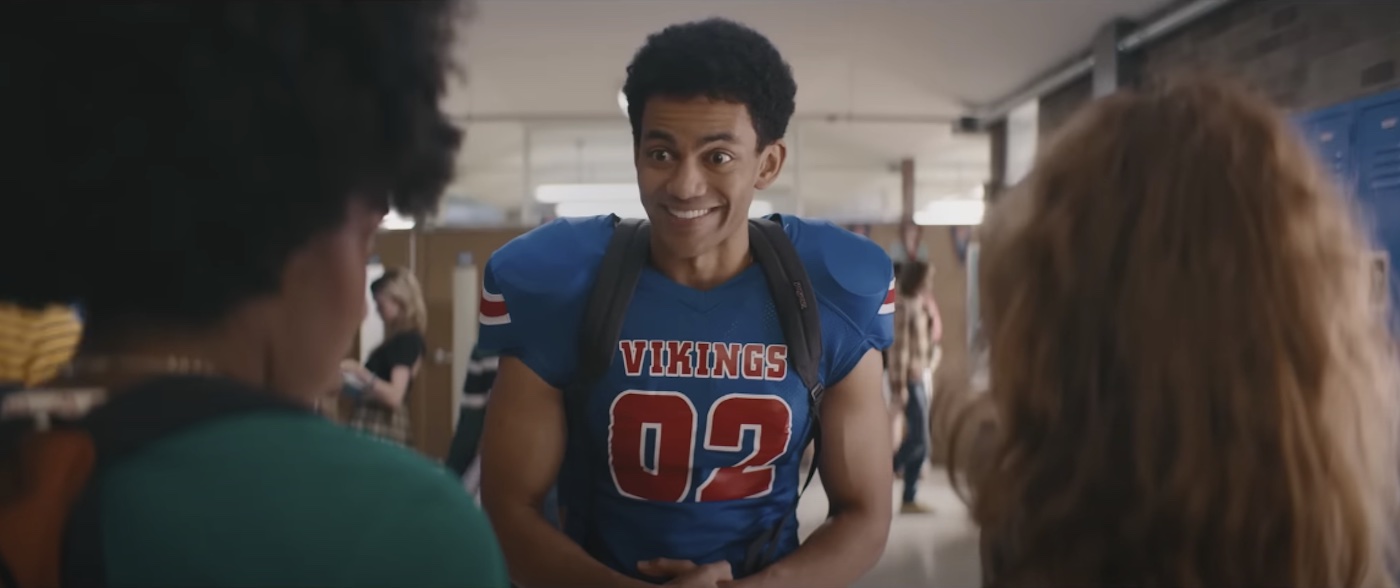
Having said all of that, I’m stuck with this reality: I laughed a lot. As PJ and Josie, the two “ugly and untalented gays” at the center of the drama, Rachel Sennott and Ayo Edibiri (who is having a year!) are sensational. They both deserve to be treated as big-screen superstars now, if they aren’t already. And their supporting cast is outstanding.
For me, the MVP here is Ruby Cruz. Her character gives the film a stronger heartbeat, and she finds moments of subtlety and nuance in her performance beyond what the screenplay demands. She looks like she has the potential to take on complex dramatic roles in the future.
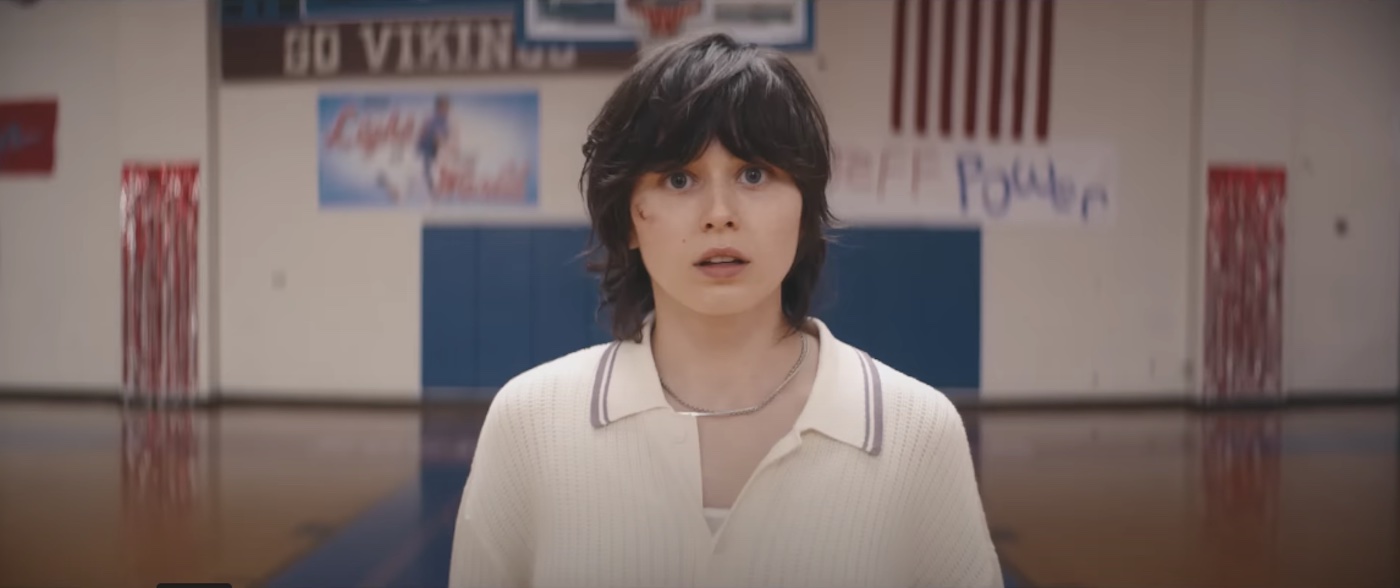
Just as the comedy team of Seligman and Sennott did with Shiva Baby — a comedy so bitter and despairing that I couldn’t laugh without also feeling sick — they twist their knives here in ways that vividly expose just how awful human beings can be to each other, even as they don’t seem to know much about who we can be at our best, or how we might move in that direction.
Do I recommend Bottoms?
I’m not going to make that call. I think that what I’ve written here can give you a good idea about whether this movie is for you or not. It’s not a film I’d watch again for its wisdom. But I do admire how, beneath the brashness and the cynicism, Seligman and Sennott seem to care about these characters. There’s a pulse of empathy and tenderness for these trouble-prone teens who have not yet discovered that hormones are unreliable compasses. They all have a lot of growing up to do in order to learn the difference between sex and love, and that only the latter leads the way to fulfillment — in any aspect of life.
But then, haven’t we all been there?
The Unknown Country (2023)
An early draft of this review was originally published on August 21, 2023,
at Give Me Some Light on Substack, months before it appeared here.
Subscribe, and you'll read many of these reviews while the films are still breaking news!
Caution: Avoid the trailer for The Unknown Country. I'm so grateful I didn't see it before I saw the movie. It's basically a highlight reel of most of the movie's best shots. And I can tell you from experience, those images are best discovered in their intended context.
As the ticket-scanner at SIFF’s Uptown Cinemas checks my ticket for the 4:45 screening of The Unknown Country, he says, "Do you realize that if you come right back for the evening showing, you’ll get to see writer-director Morissa Waltz, the lead actress Lily Gladstone, and the co-writer Vanara Taing for an in-person Q&A?"
Oh.
"No," I said. "No, I didn’t know."
And then I added, "And I have plans later, alas. So I guess I'm missing out."
But what I really wanted to say was, "And as I cannot come back later... thank you for spoiling my afternoon!"
Dang. Dang dang dang dang. That was a five-dang bummer.
And yet I'm glad to report that my afternoon was not completely spoiled. The Unknown Country was not only worth seeing on its own, without the after-movie in-person experience, but I'm pretty sure it's going to rate highly on my list of favorite films for 2023.

Don't get me wrong: I feel the sting of missing out on that Q&A. I would have had so many questions. And I would have wanted to thank all three artists for giving me one of the most human and heartening experiences I’ve had at the movies all year.
Once in a while, a film comes along that shows you just how your lifetime of moviegoing has conditioned your imagination to anticipate only certain kinds of stories. The Unknown Country is one of those rare and nourishing experiences that stubbornly refuses to conform to any of those formulas, quietly expanding what we understand to be possible. In a sense, I did not need to “suspend my disbelief” during this film because there was no disbelief to suspend. This world, these characters, these scenarios — don't tell me they aren't happening.
If I provide any sketch of this movie’s narrative, I might give you the wrong impression. Yes, things happen in The Unknown Country — it’s an episodic road movie in which the traveler reveals a little more about herself at each of the major stops, in each of her encounters, even as she leaves some key questions unanswered. Tana comes from an Oglala Lakota family, but she hasn’t been a part of their South Dakota reservation roots or their family traditions for eight years, and it’s obvious to us right away that the journey back into that context for the wedding of her cousin, Lainey Bearkiller Shangreaux, is complicated for psychological and emotional reasons we may guess at, but the movie doesn’t fill in those blanks for us. There, she will receive a gift that serves as a sort of compass for the next stretch of her journey, which takes her south through Texas. She is clearly grieving some kind of loss. While most film critics are spelling out the details of that loss in their reviews, I’d argue it’s better to receive those details in Tana’s own time.

But you might enjoy the movie more if you know that there is no shocking twist, no big-scene revelation. We’re not being set up.
This movie isn’t really about a sequence of events so much as it is about spending time on the road with a quietly beautiful and solitary young woman whose heart is warm but broken. Tana has invested herself for years in support of someone else, and now she is moving through a difficult and emotional season of transition.
It’s also about the similarly complicated supporting characters Tana meets along the way, each one of whom is interesting enough to be the focus of a separate film. Director Morrisa Waltz gives generous attention to — and thus, I would go so far as to argue, loves — each one of them with her camera. We’re given tangential character sketches for several of these singular personalities, each one soon to vanish in Tana’s rearview mirror. Like the individuals we met along the road in Chloé Zhao's Oscar-winning Nomadland, these characters seem surprisingly human in their idiosyncrasy and complexity. That’s because many of them — Lainey, her fiancé Devin, their daughter Jasmine, and others including a waitress, a service-station attendant, a motel owner, and a dance-hall regular named Flo — are non-professional actors playing themselves and telling us their true stories. (One is honored with an “In Memoriam” frame during the closing credits.)

Lily Gladstone is magnetic at Tana, compelling our attention by drawing us in to her watchful and meditative nature and inspiring questions about her history and hardships. I won’t be surprised if, at the end of the year, when she’s likely to become a household name on a wave of Oscar buzz for Martin Scorsese’s violent epic Killers of the Flower Moon, I’m encouraging everyone to catch her performance in this movie as well for a greater exhibition of her strengths. We’ll see.
Earlier, I said that The Unknown Country doesn't follow any familiar templates. But are there other films I would shelve on the same shelf in a video store due to some kind of cinematically similar spirit? There's a hint of the aforementioned Nomadland here, and there’s a vibe that reminds me of Terrence Malick contemplative style—and I had already written that into my notes before I saw the trailer that announces both of those connections. But it's not nearly as epic in scope as any of those films, and there's nothing calibrated for awards-season "wow" factors (which is just fine with me).
The movie that comes to mind most? Well, it's more a performance than a movie, really: As Tana, Gladstone kept reminding me of Ashley Judd as Ruby in Victor Nunez’s radiant Ruby in Paradise, the sorely underappreciated 1993 Sundance Grand Jury prize-winner. Both films have a warm-hearted authenticity that make me think Tana and Ruby might live in the same world and meet somewhere along the way.
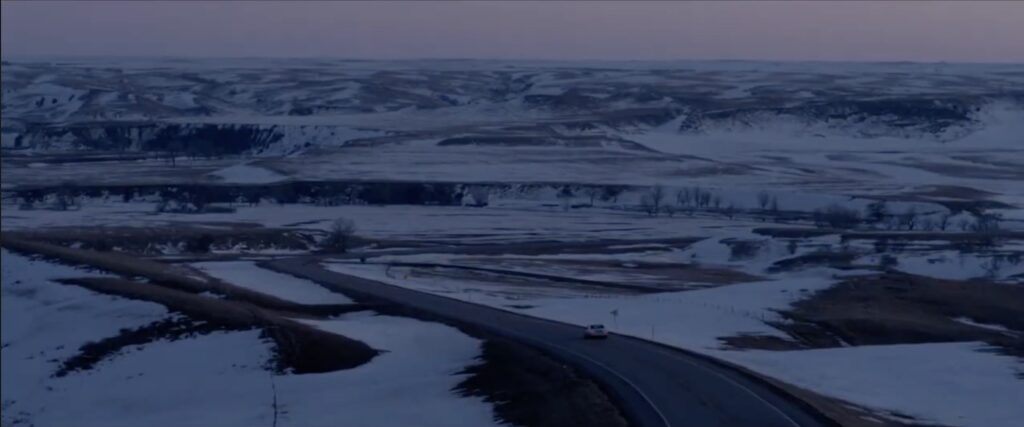
I remember Ruby in Paradise for how it slowed me down to a point that I felt I had really come to know not only people but places, and that I could leave the theater and go find them — or find characters and worlds much like them. And it seemed a pleasing prospect.
I suspect I will remember The Unknown Country for similar reasons. It kindles my curiosity about people I encounter only briefly in seemingly incidental stops along the way. It makes every encounter along the road seem like an opportunity to “love my neighbor,” establish a new friendship, learn a new story. Such encounters can enrich the traveler with a stronger understanding of the world they’re a part of, with a deeper knowledge of history, with gifts that will alter the journey ahead, and, sometimes, with surprising moments of self-discovery.
Barbie, Pt. 3: My full review!
My full review of Barbie is now published at Give Me Some Light, bringing a conclusion to my three-part series on Greta Gerwig's summer blockbuster.
Subscribers who have contributed — either a little or a lot — to help cover costs of my film reviewing have full access. Later in the year, I'll republish the full review here.
Killers of My Substack Journal: New films by Scorsese and Fincher
Killers, killers, everywhere we look. War in Ukraine and Russia, in Gaza and Israel, an ongoing slow-motion war in America of white supremacists and Christian Nationalists against brown and black bodies. Those are battlefields in which individuals have blood on their hands, but their violence is inspired, influenced, and enabled by systemic corruption.
And there's another American battlefield on which everyone is losing with no sign of relief: Men we have failed by providing insufficient mental health care are lashing out with violence, using the weapons of war we hand over to them to commit mass killings. It's enough to make you wonder: Gee... what in the world might we do to change this?
I have a suggestion: Look at this graphic and vote carefully. (Post by film critic Melissa Tamminga used with permission.)
In order to understand such any of these horrific trends of violence and address them with wisdom and conscience, we need great art about violence to help us see more clearly.
Looking for my review of Martin Scorsese's Killers of the Flower Moon? I've posted a substantial essay offering some first impressions at Give Me Some Light, my Substack journal. (Everyone can read the opening paragraphs, but the full review is available only to paid subscribers for now.)

Did you know that David Fincher — director of Seven, Fight Club, The Curious Case of Benjamin Button, Zodiac, and Gone Girl — has new film in theaters right now for a very limited time?
If you're content to wait for a streaming option, The Killer will be on Netflix before you can announce "The return of Michael Fassbender!" I didn't wait. I went straight to the theater, and I've posted a first-impressions review at Give Me Some Light. This one is free for all to read.


